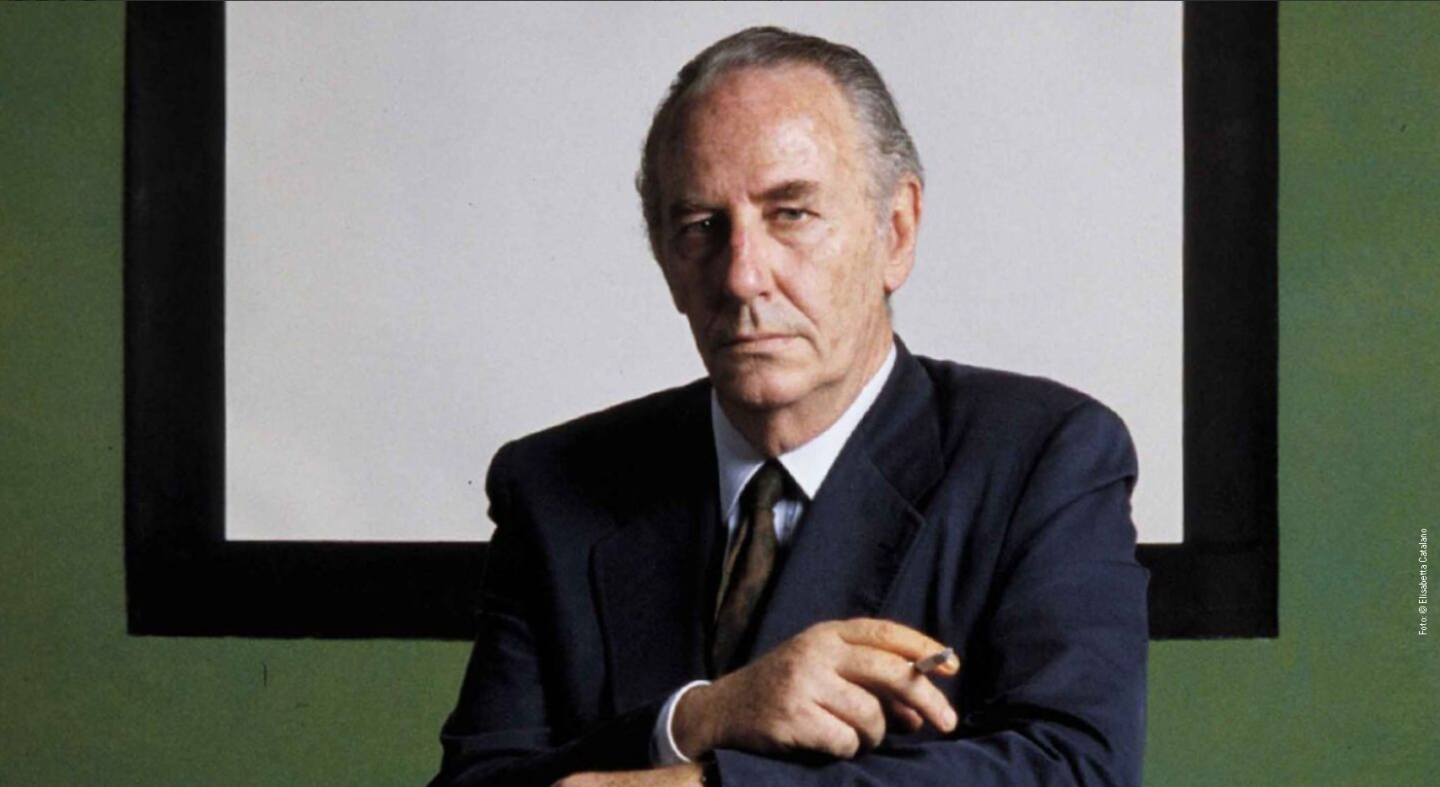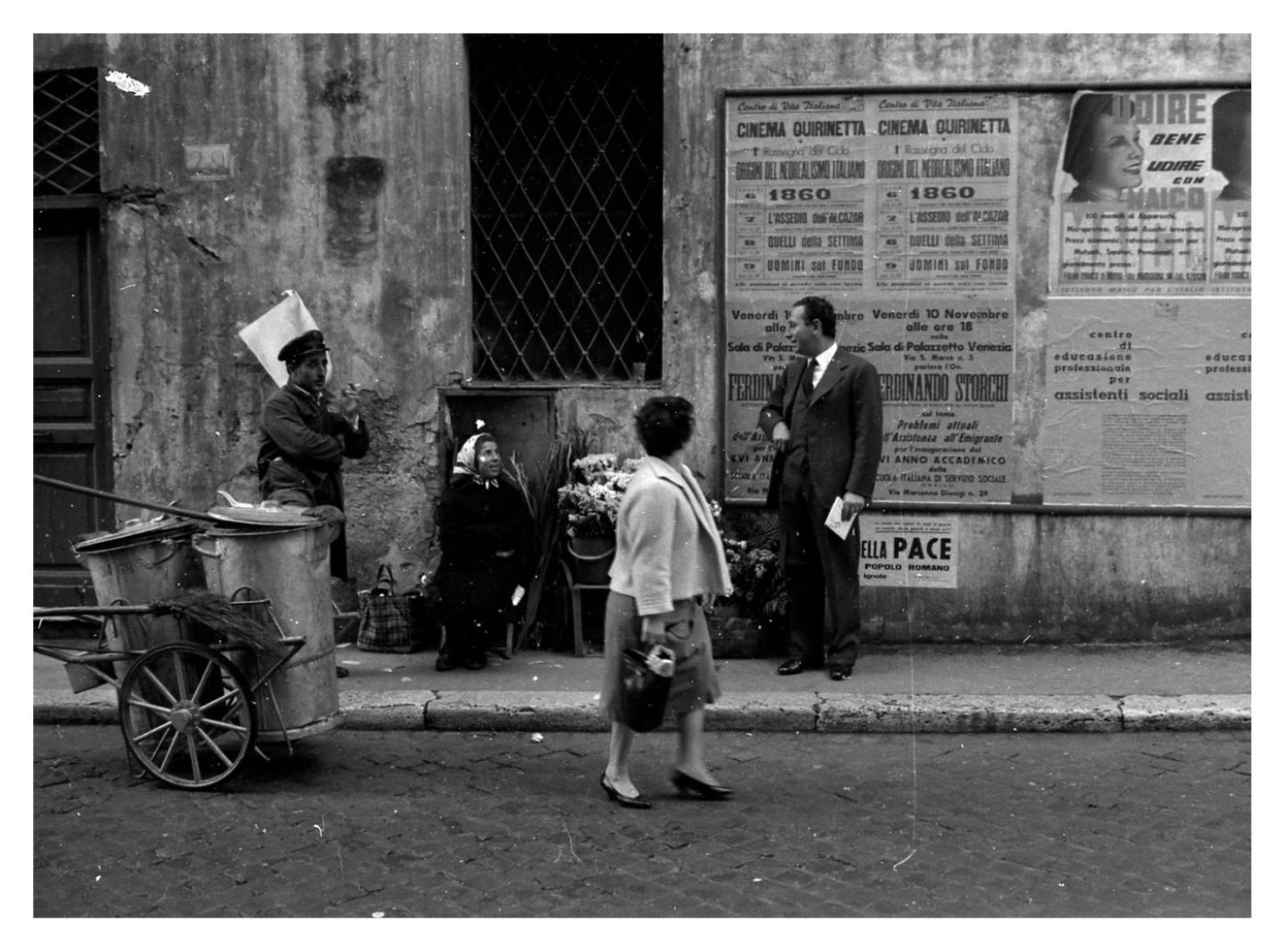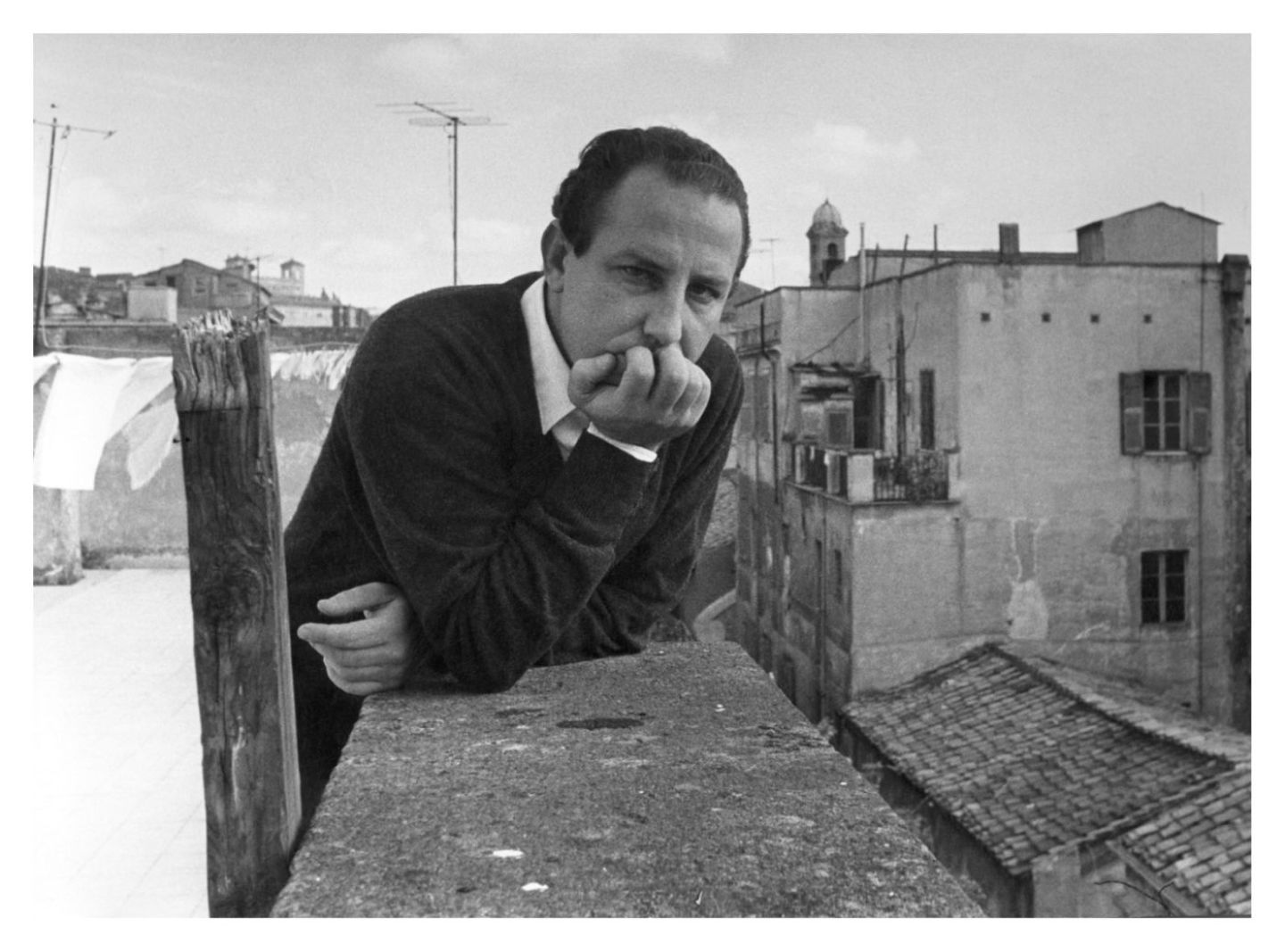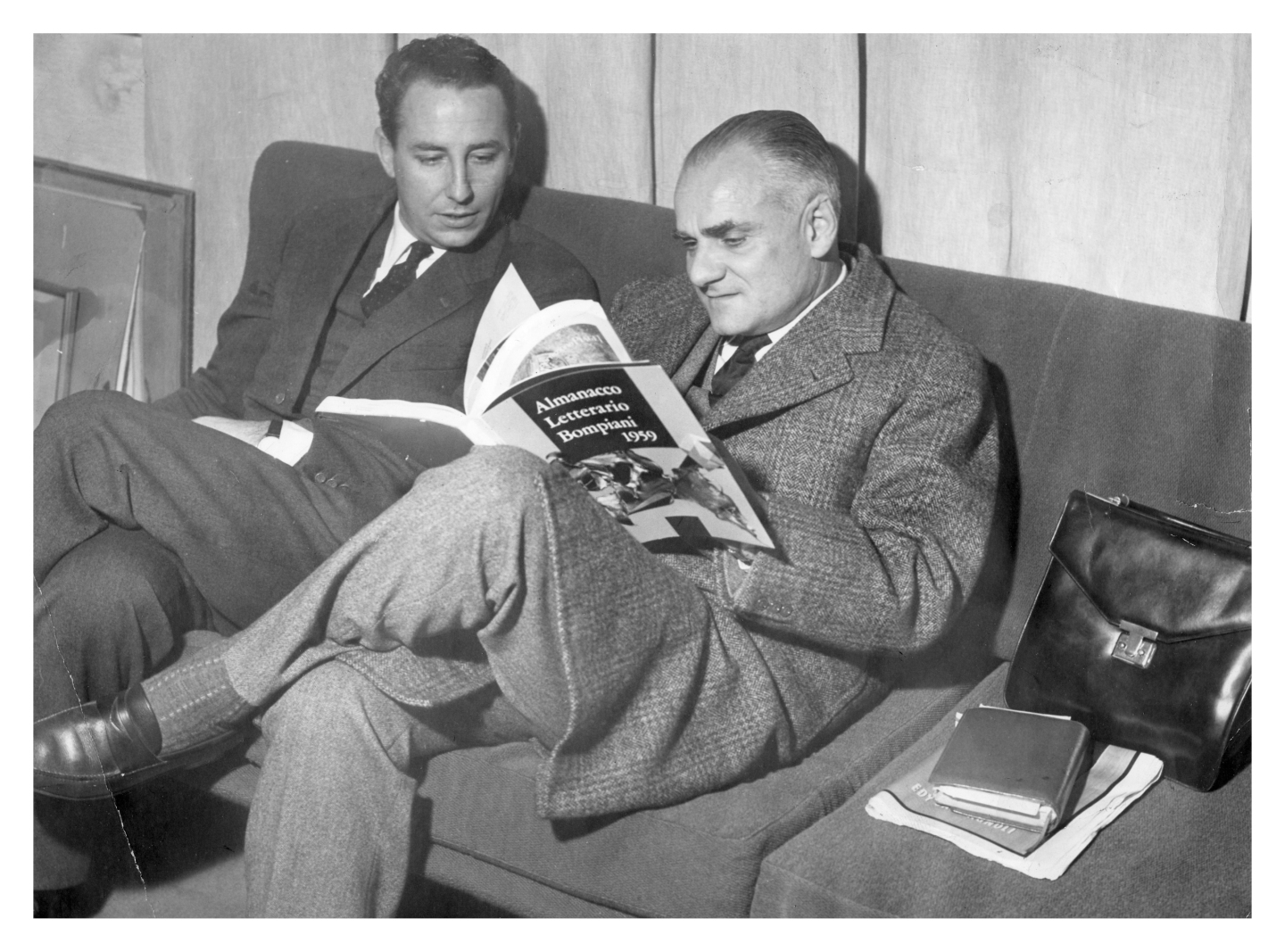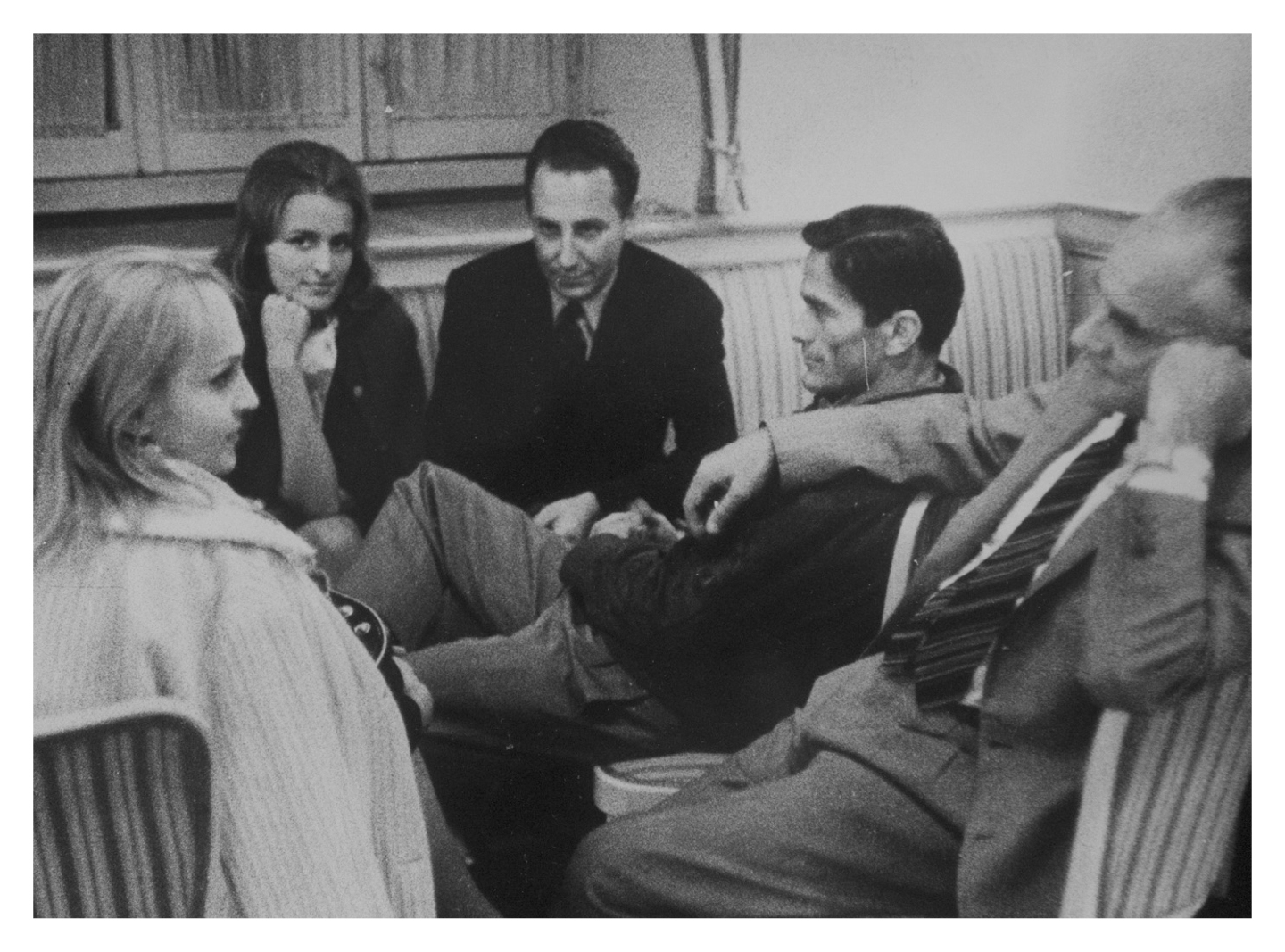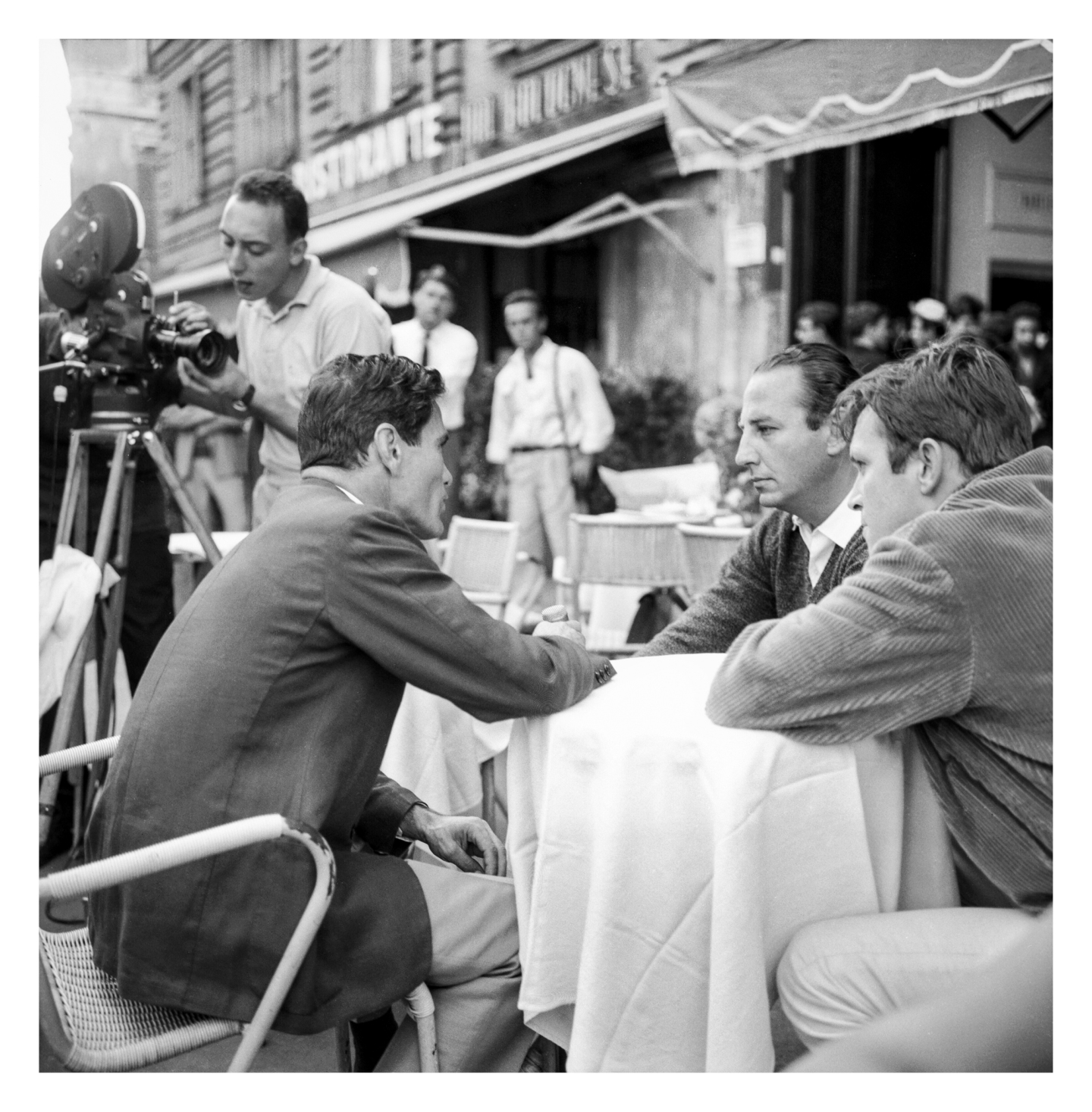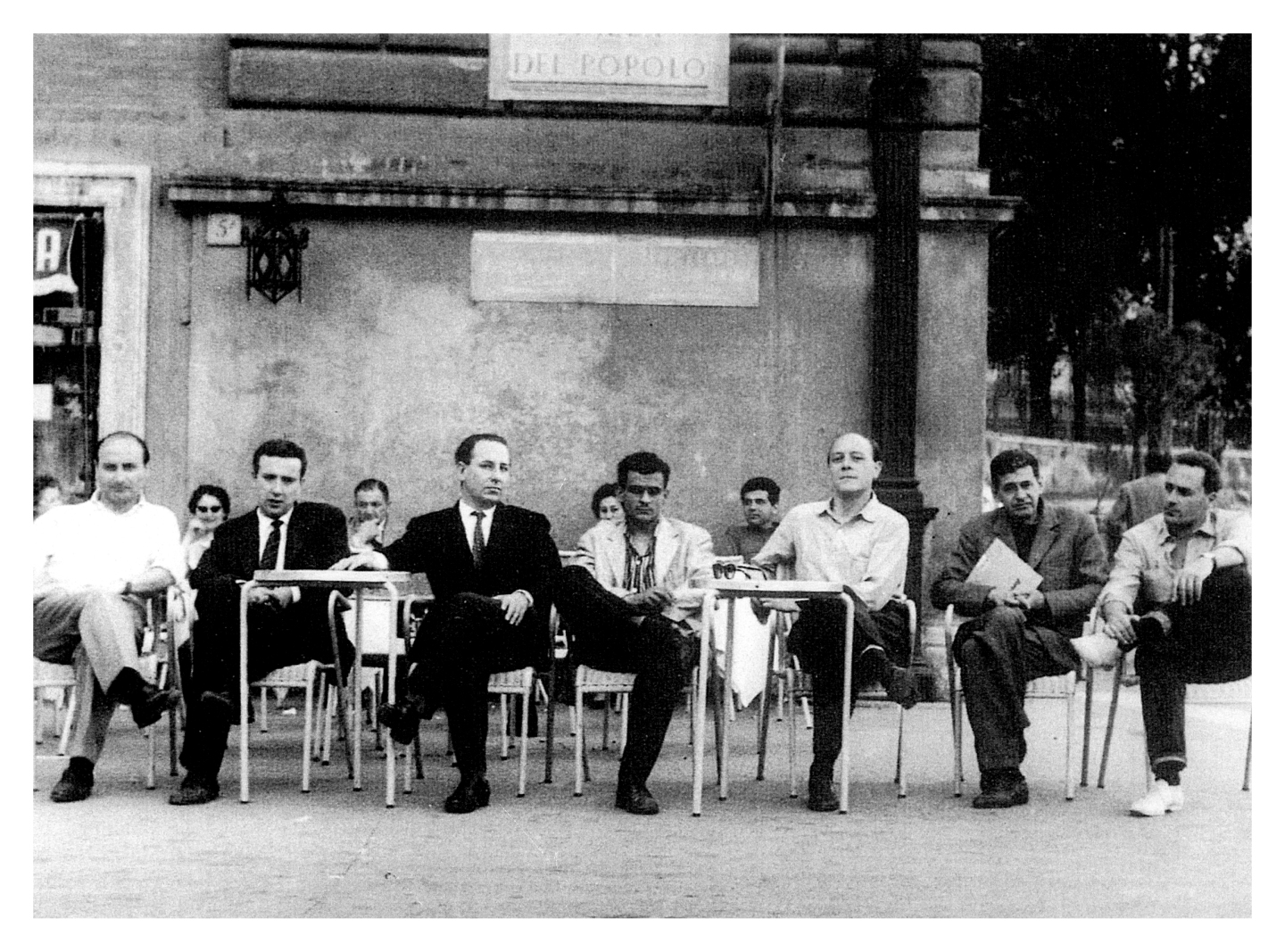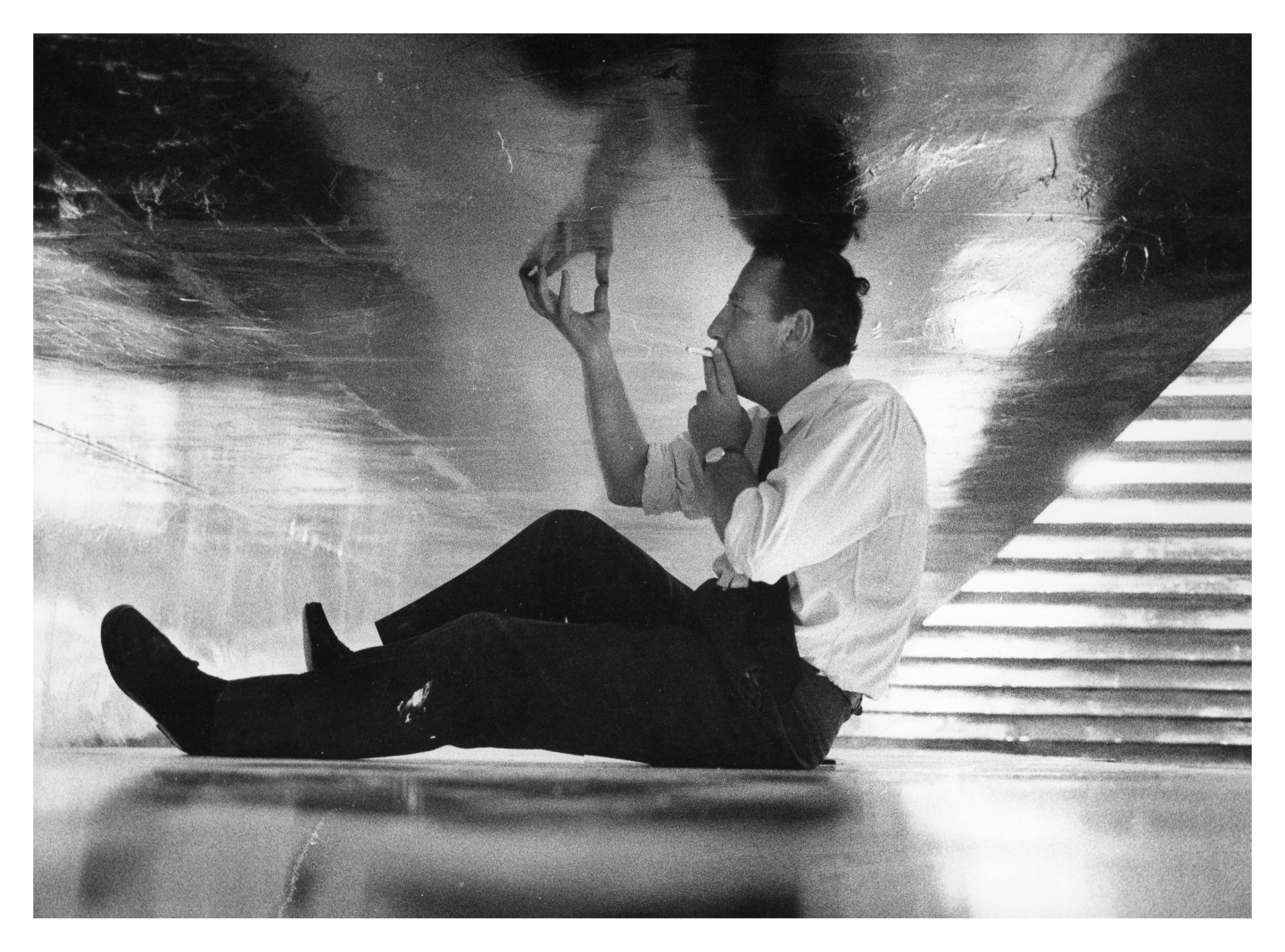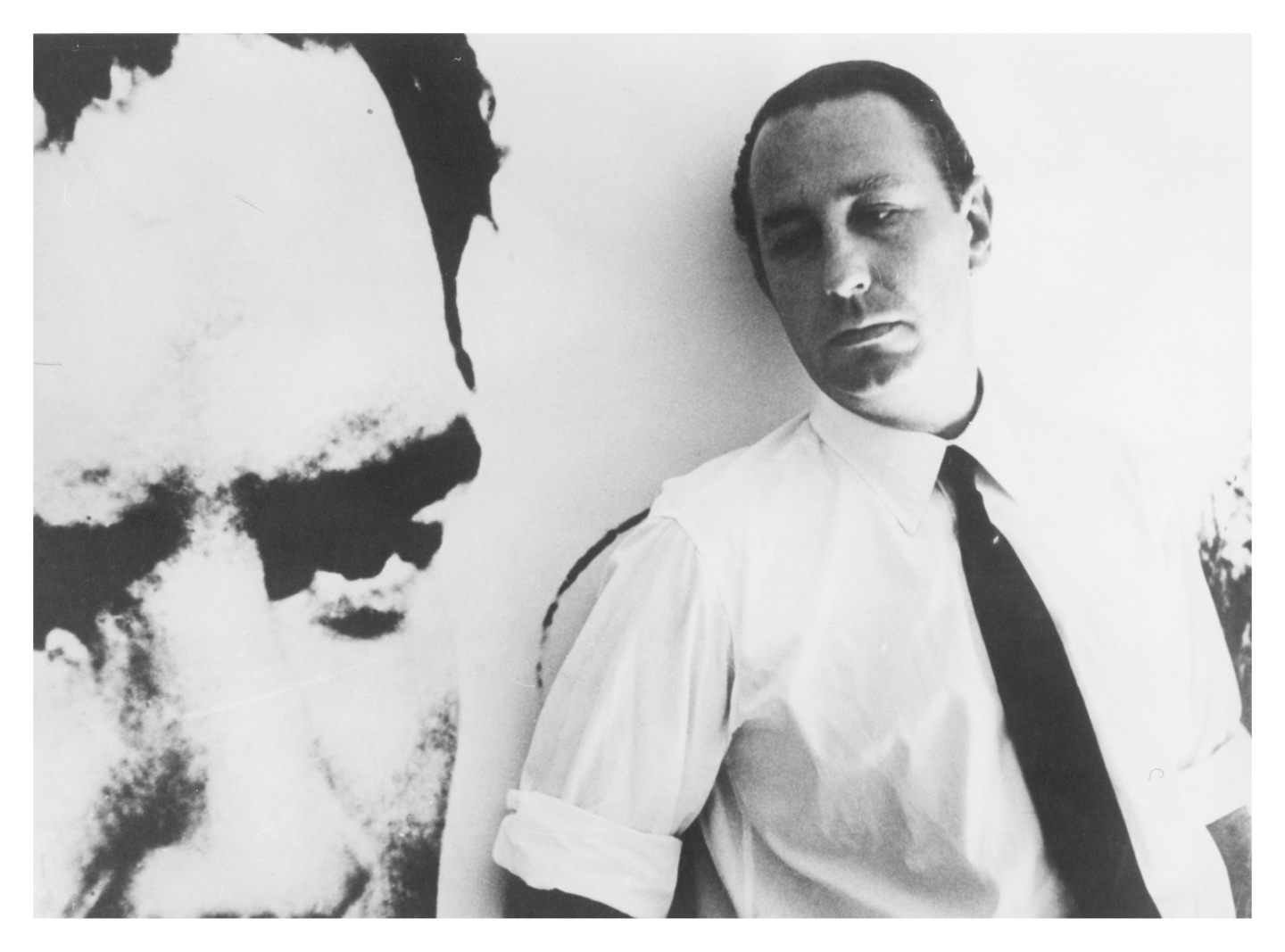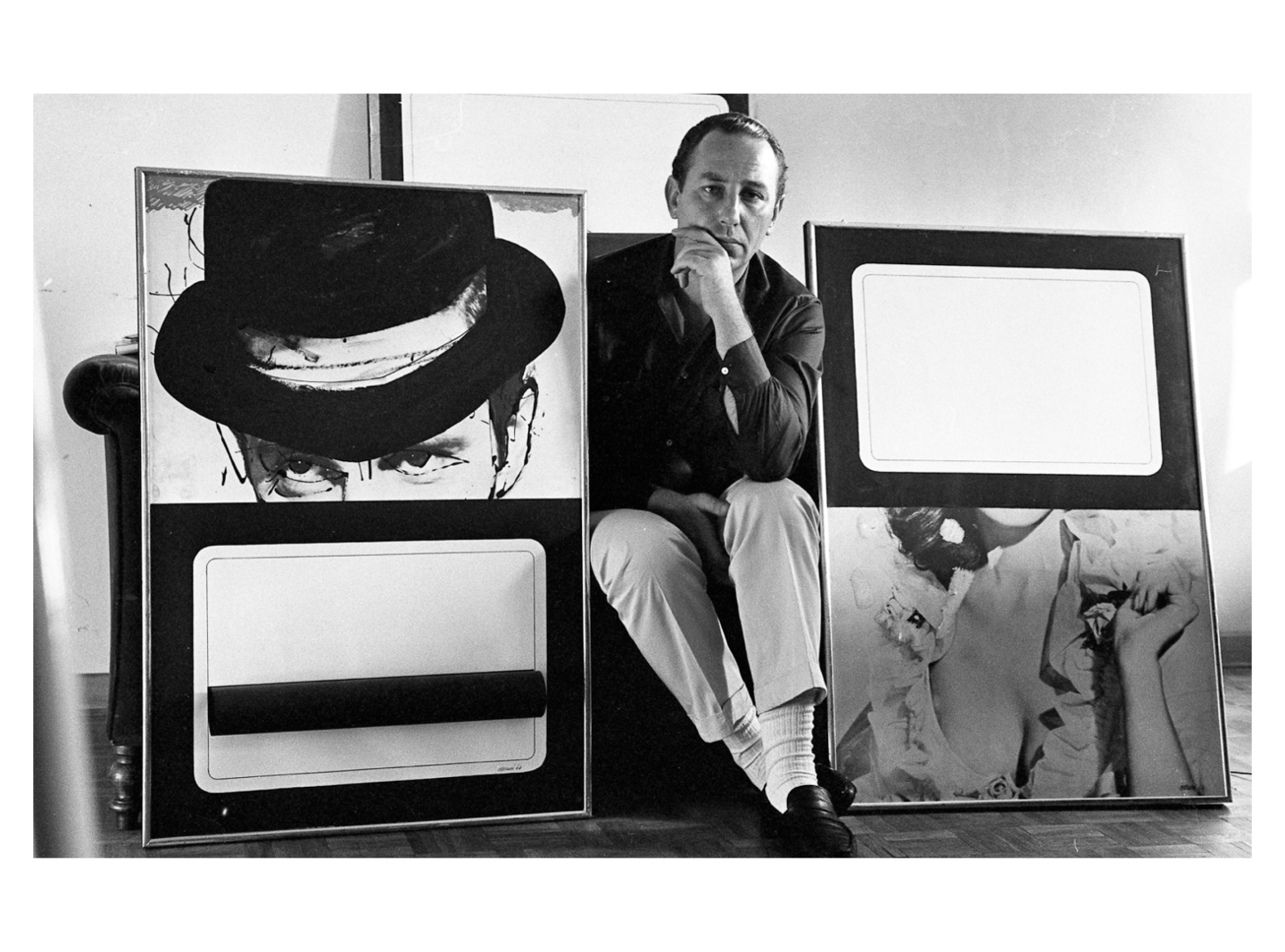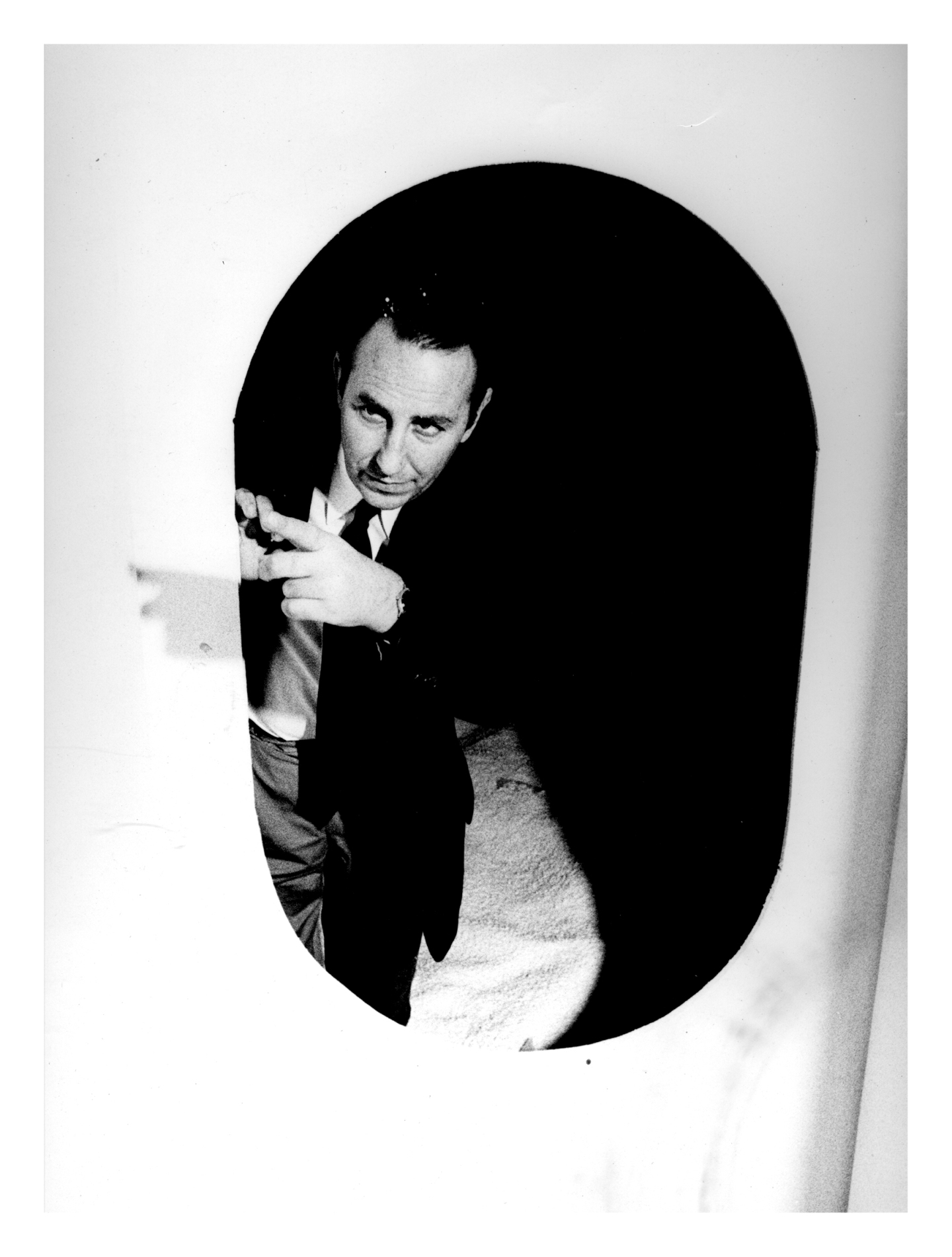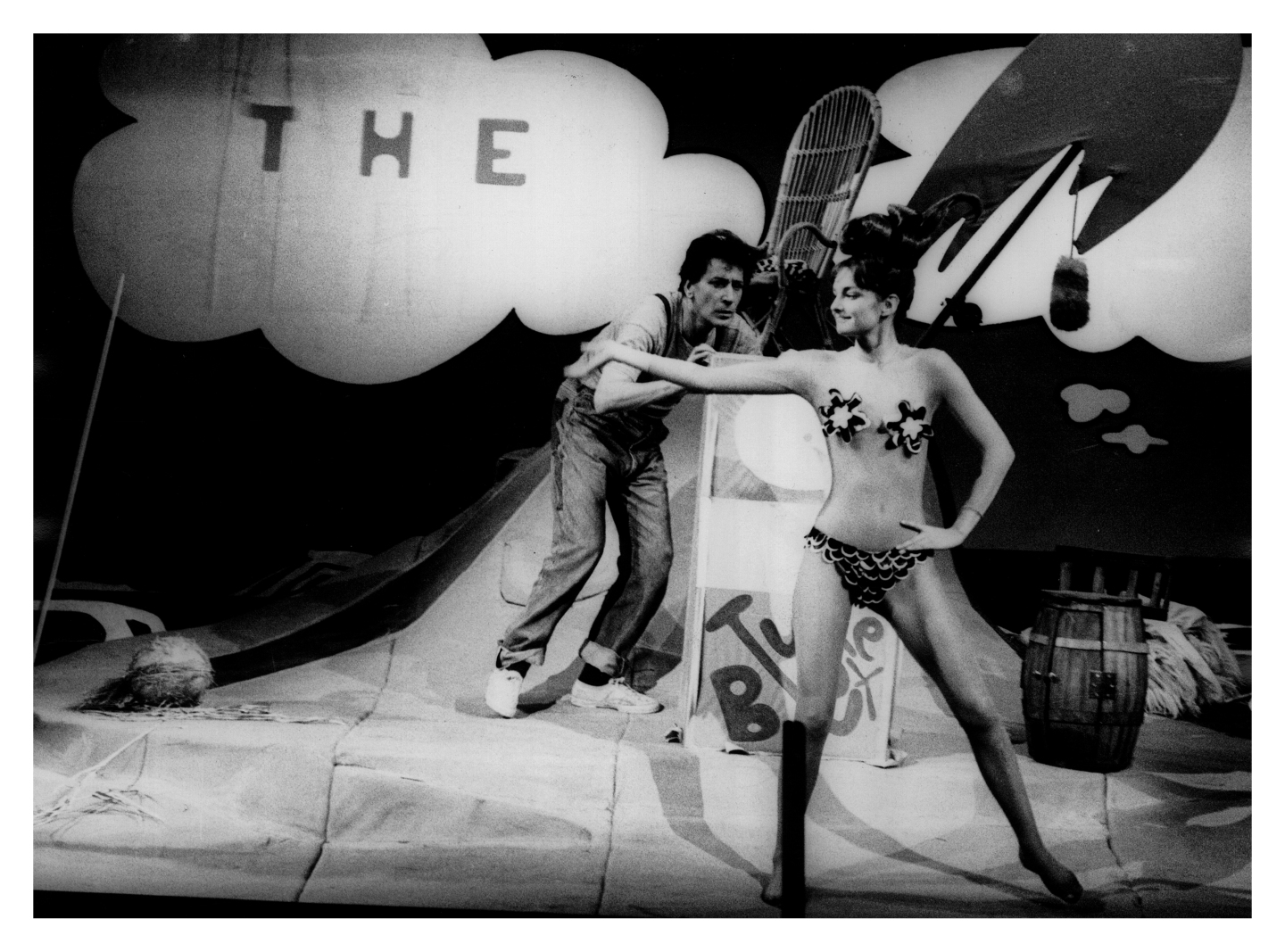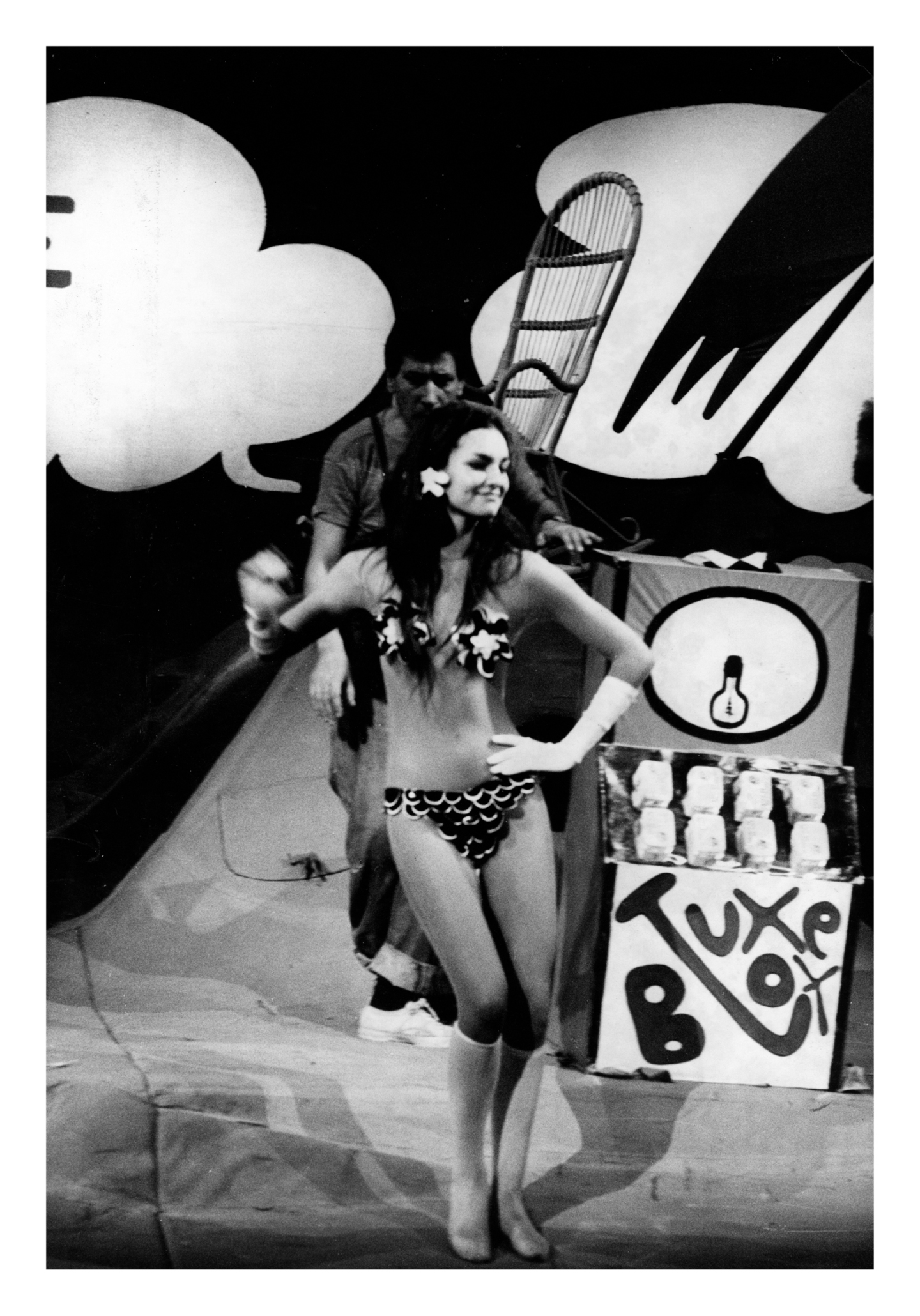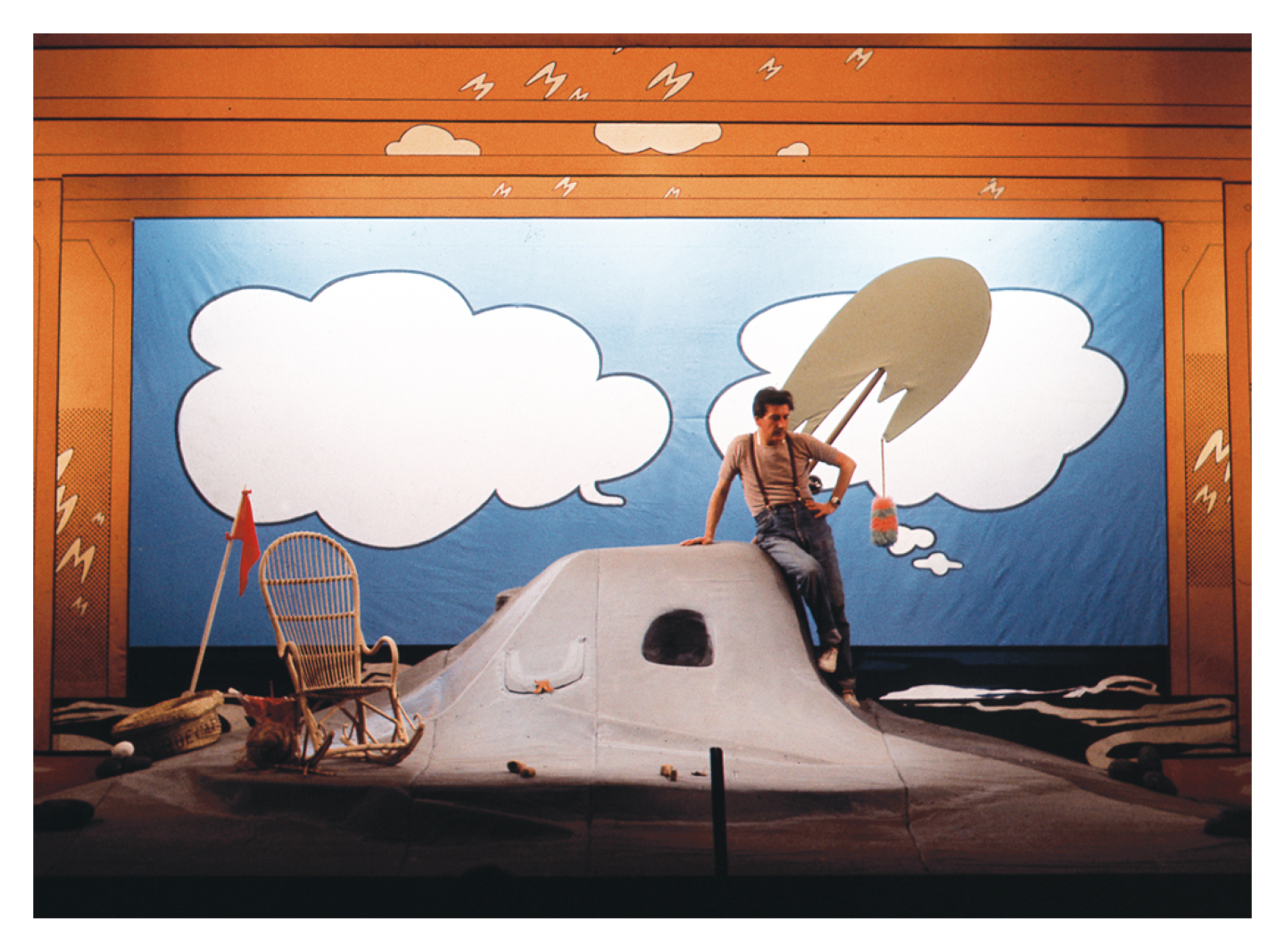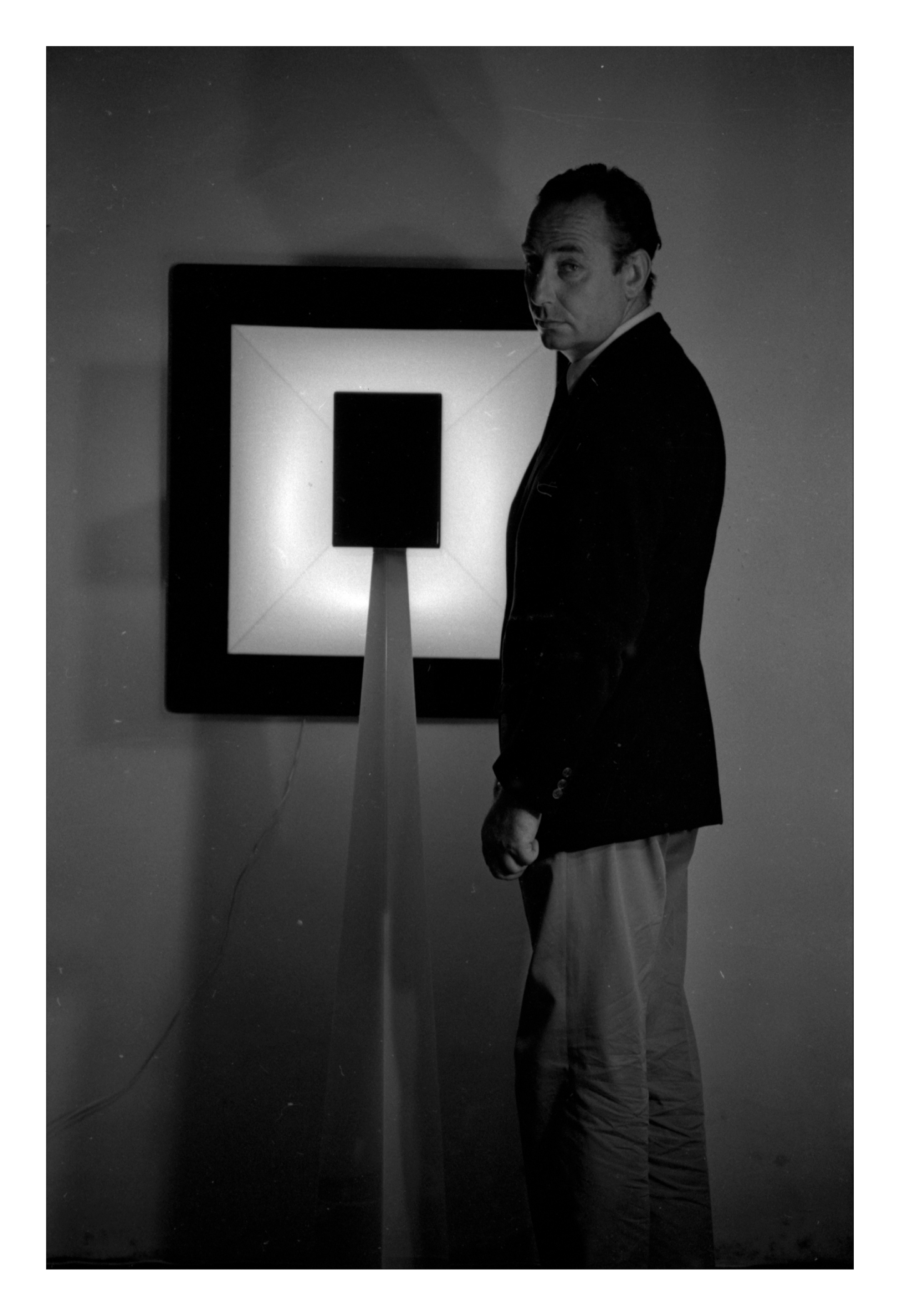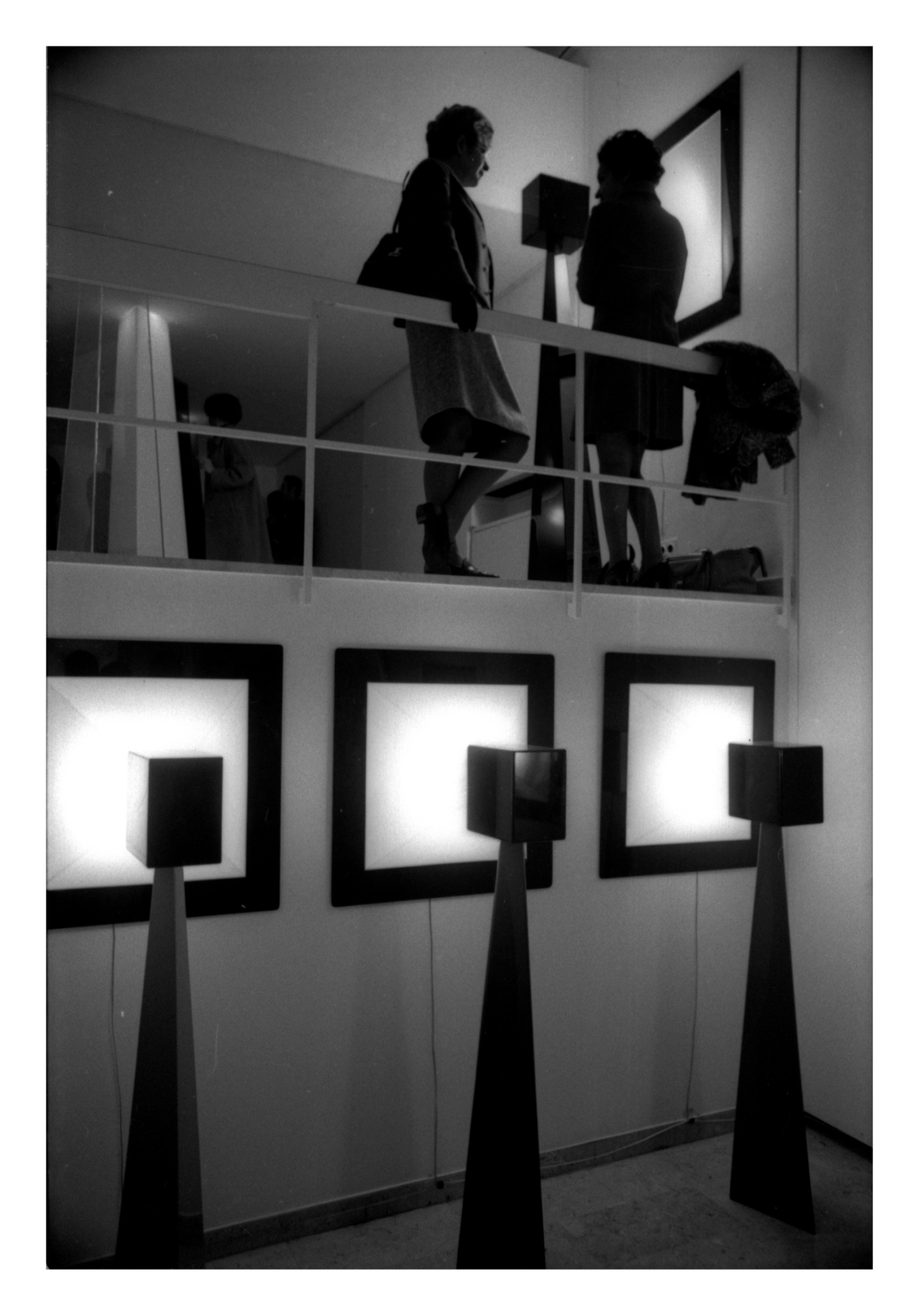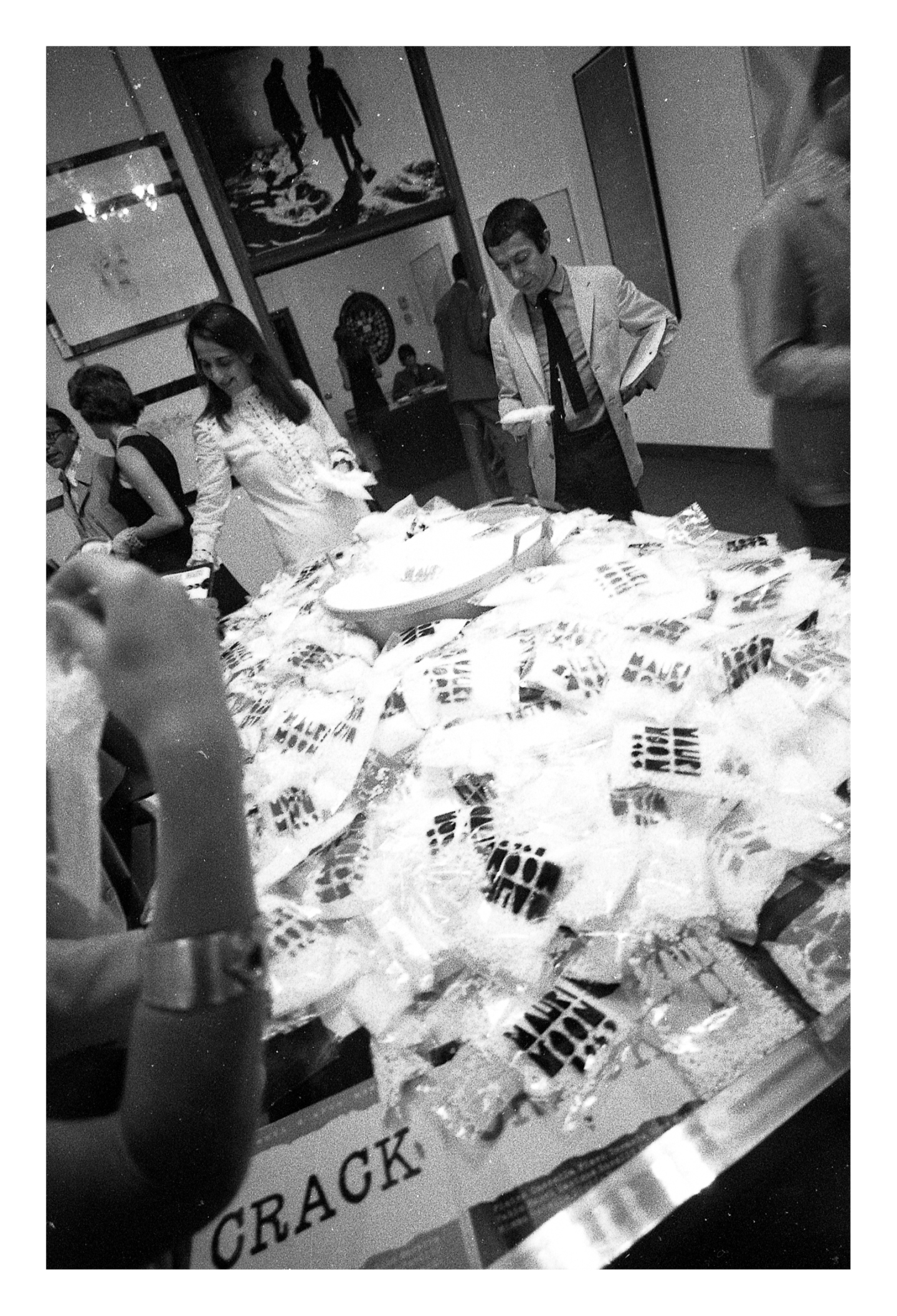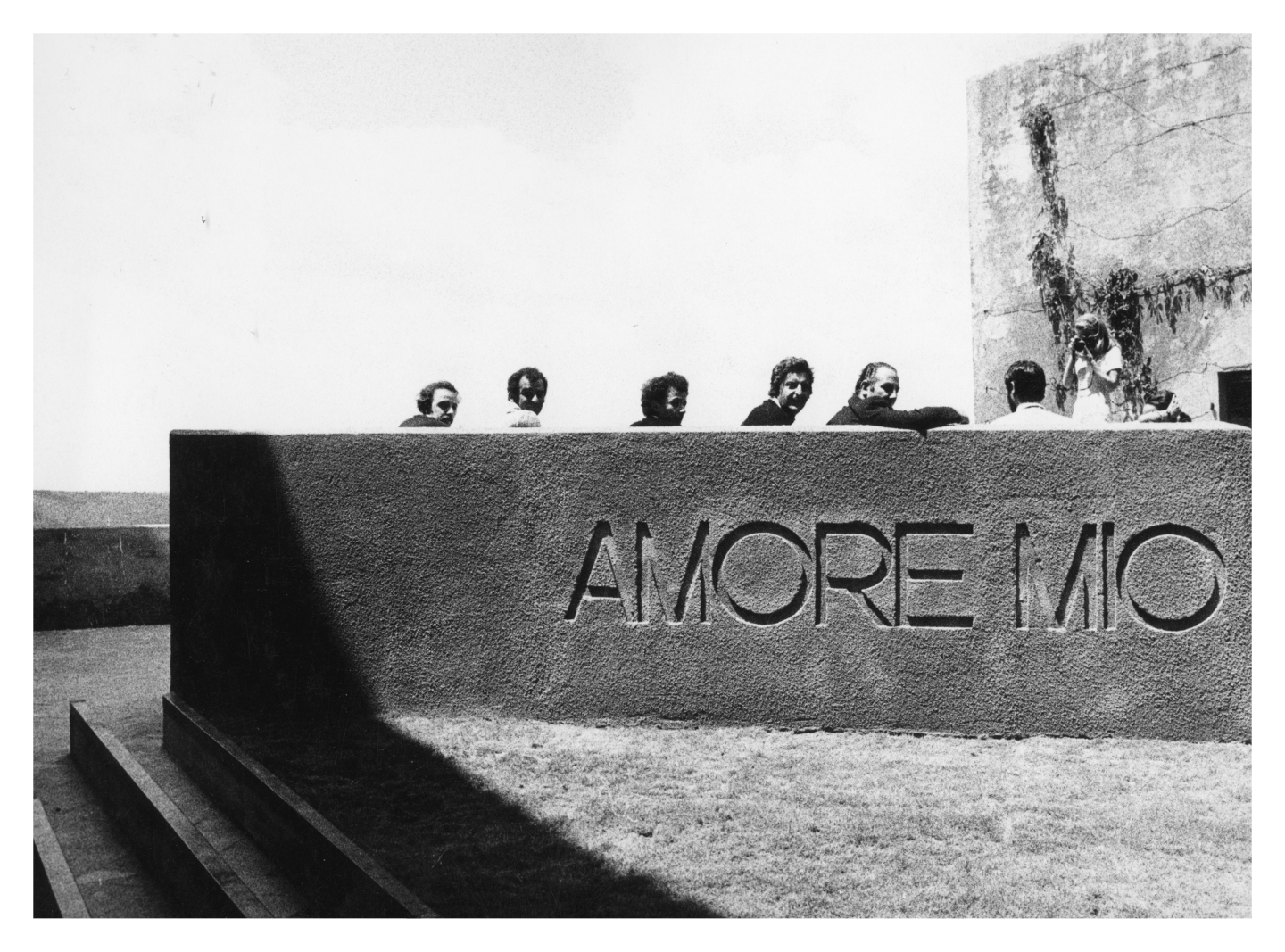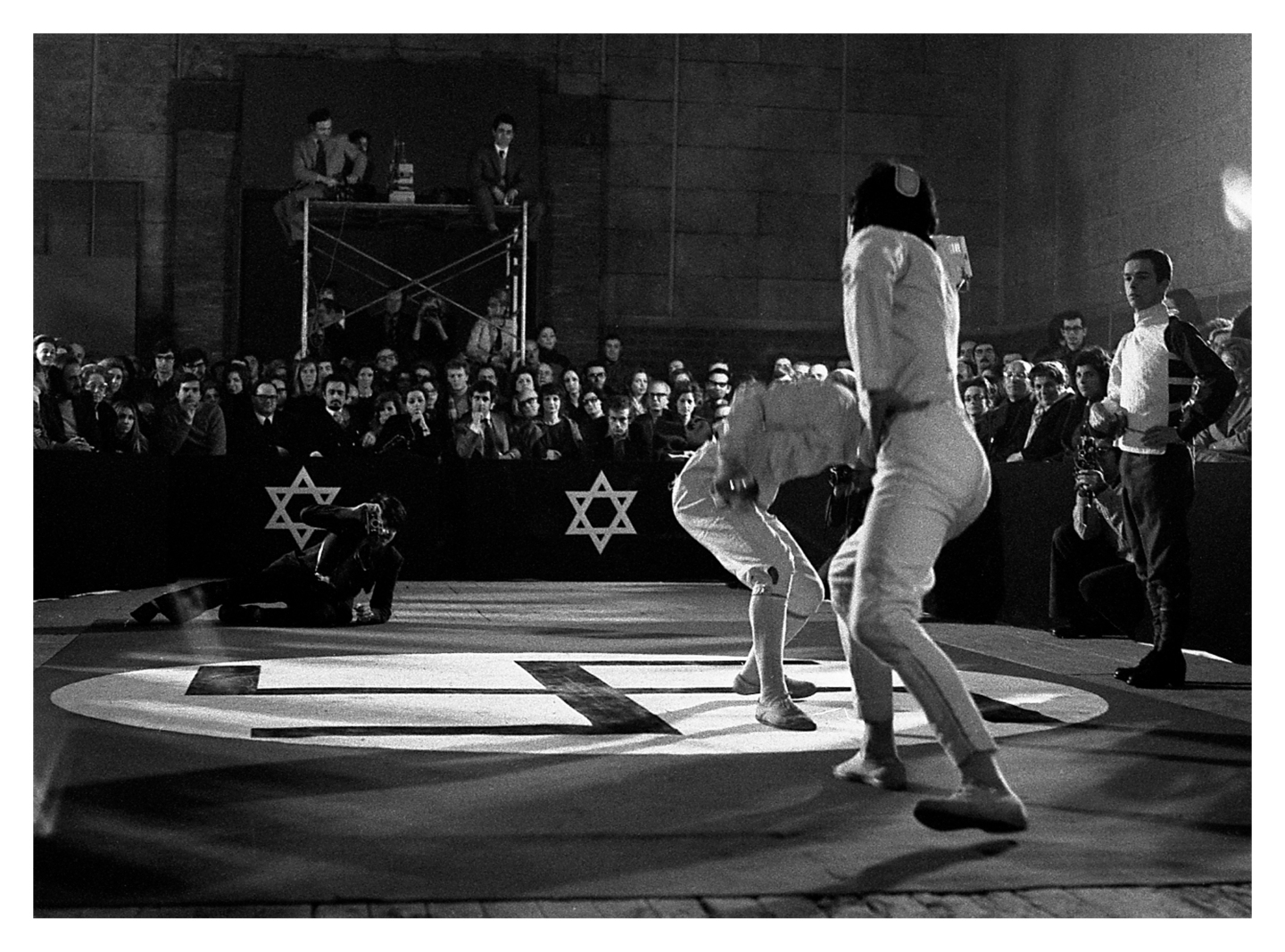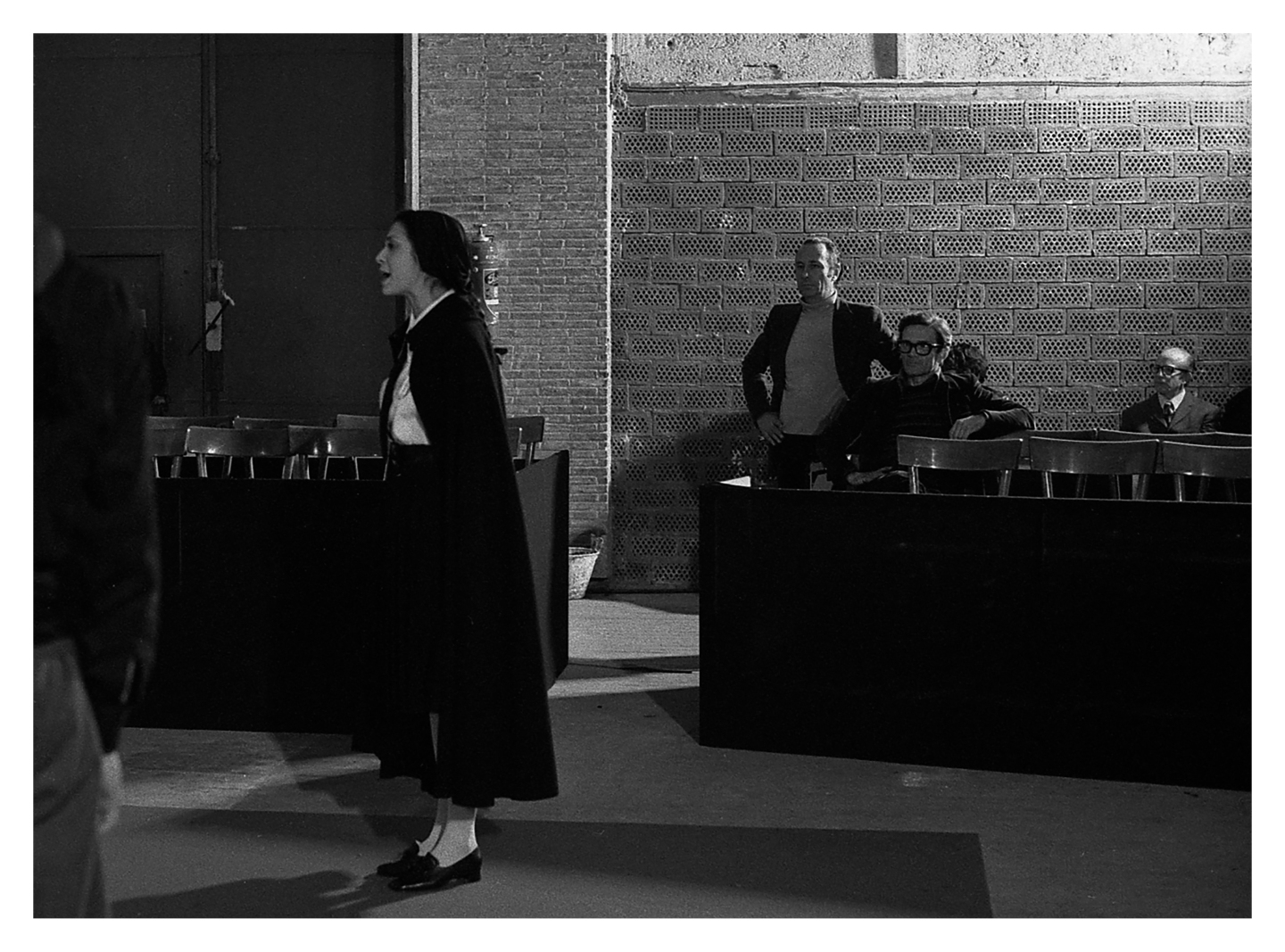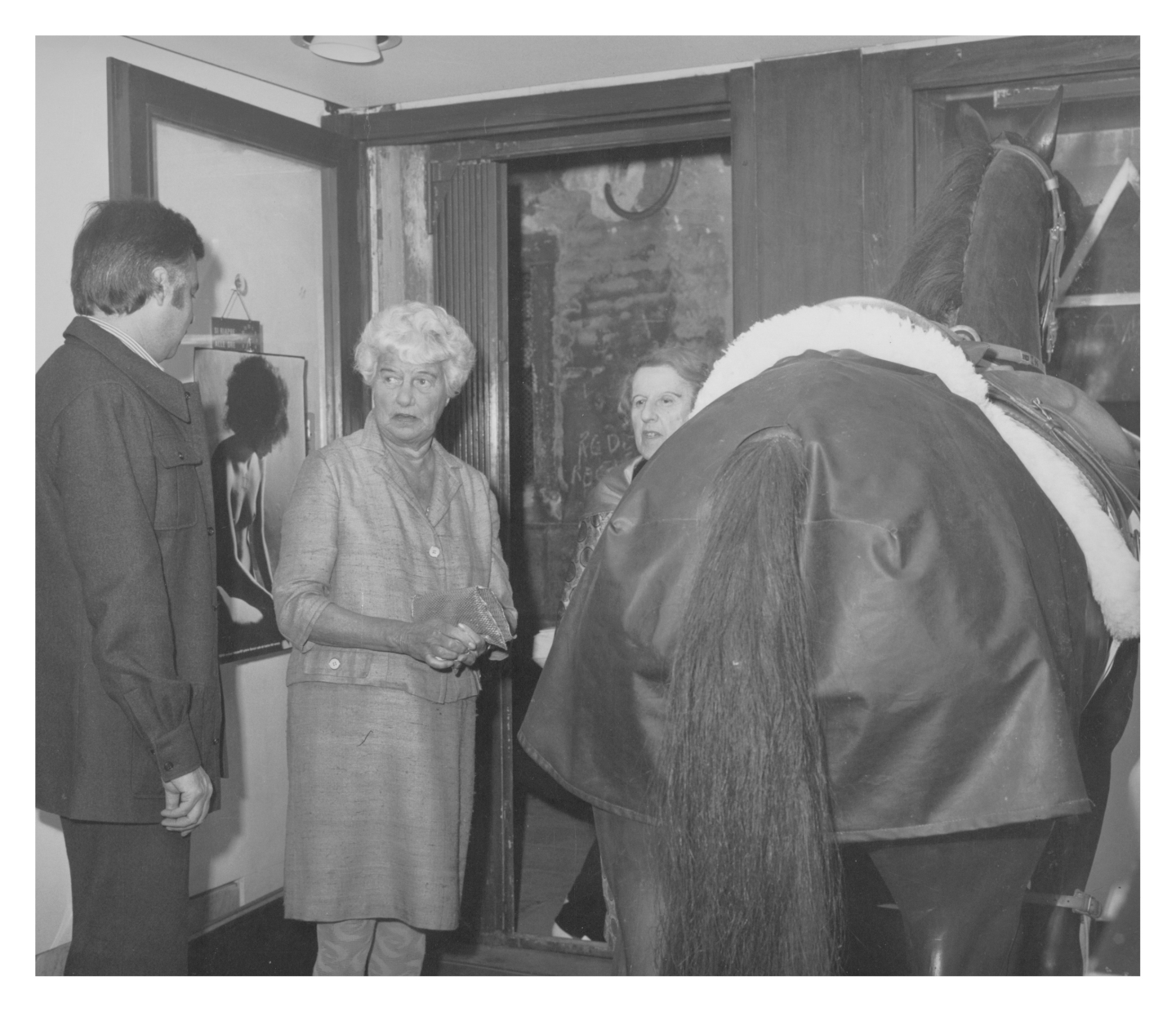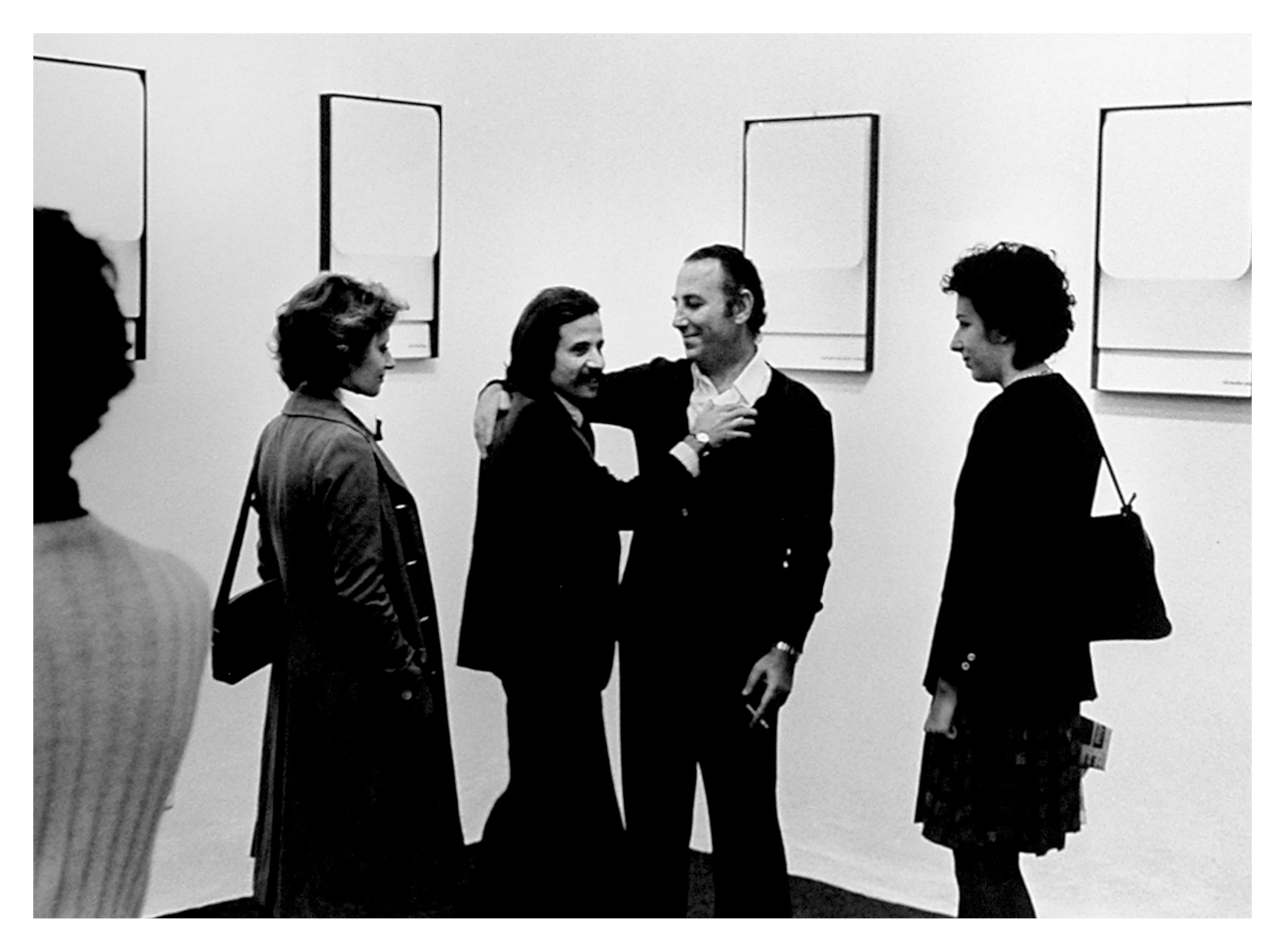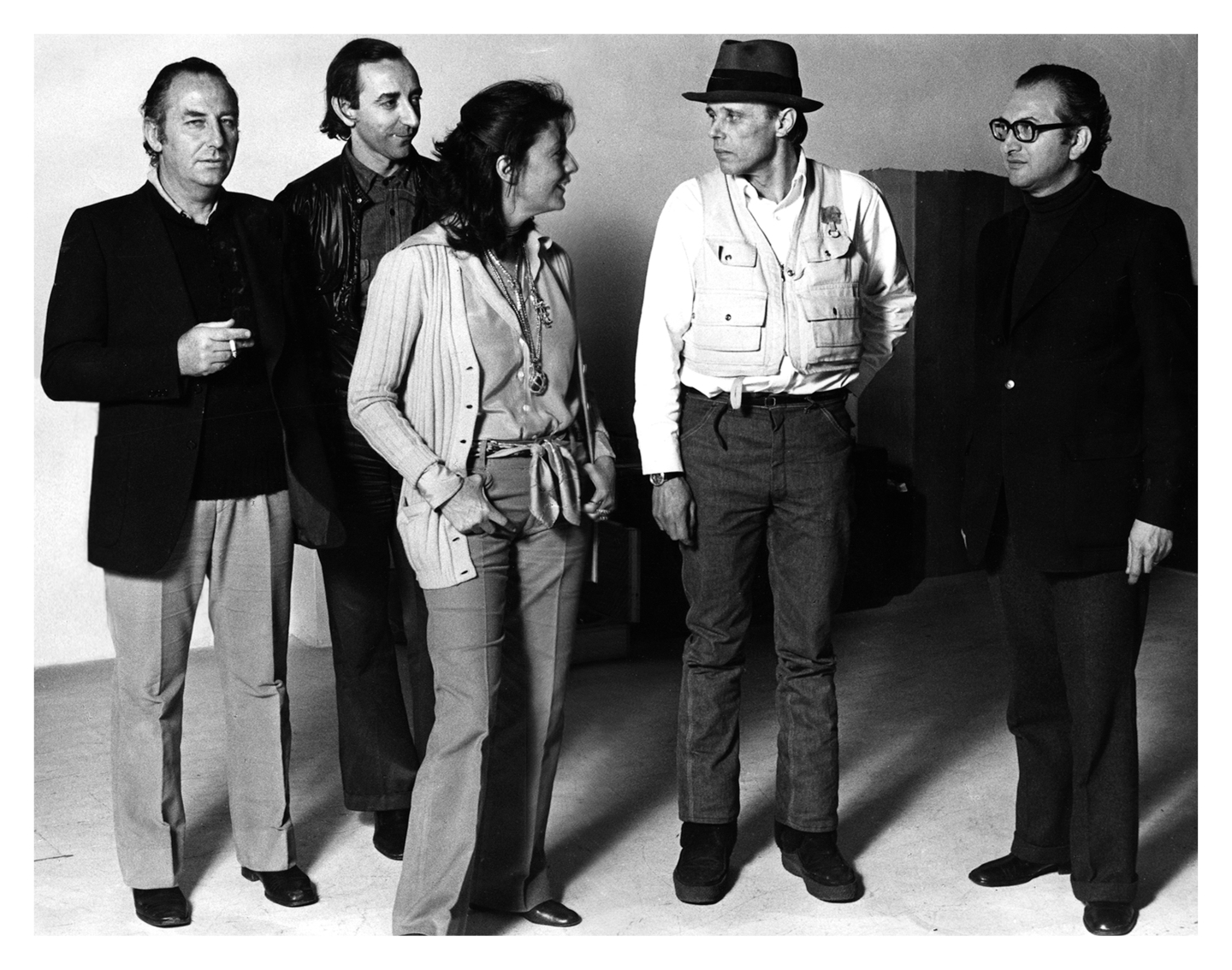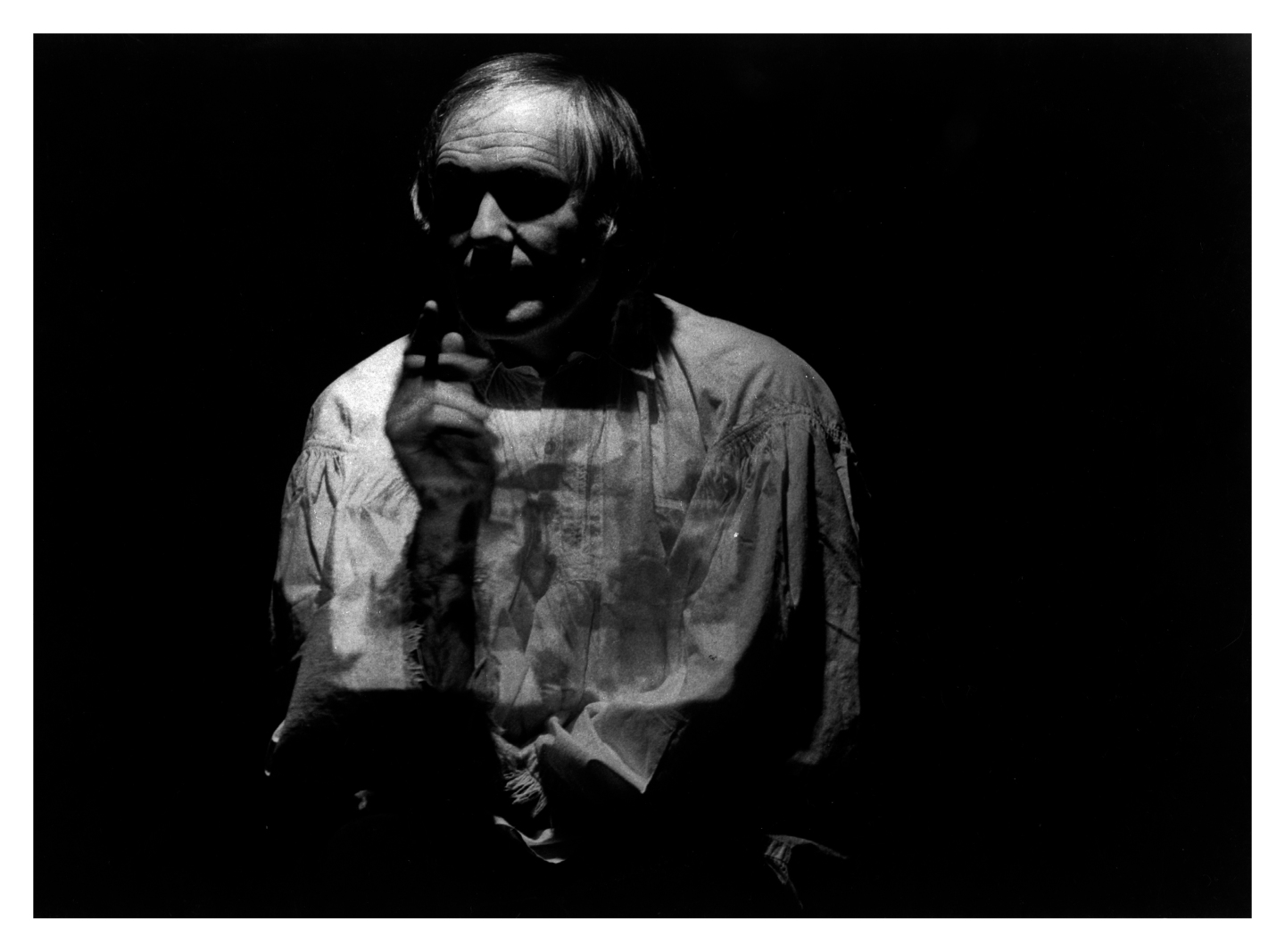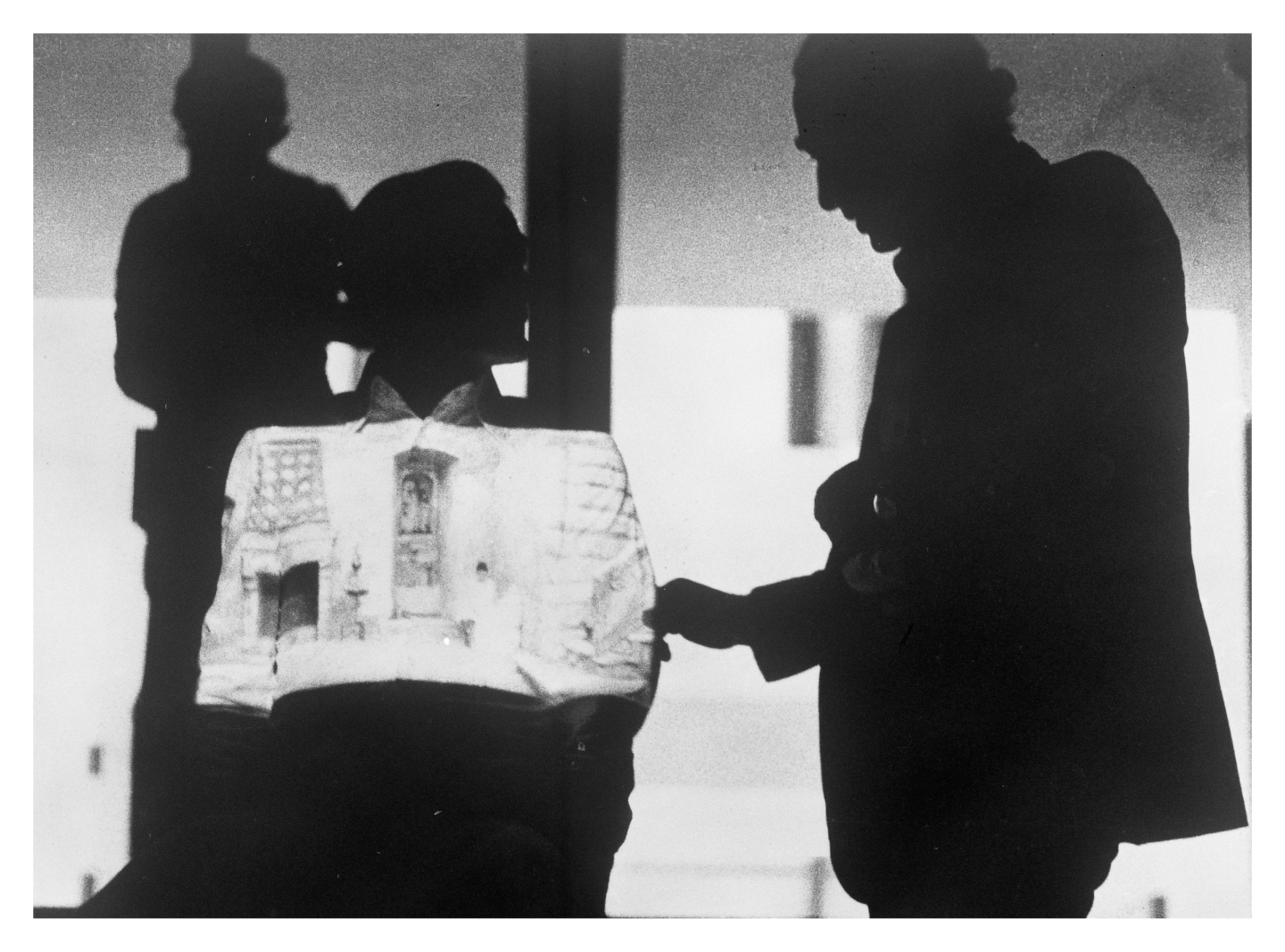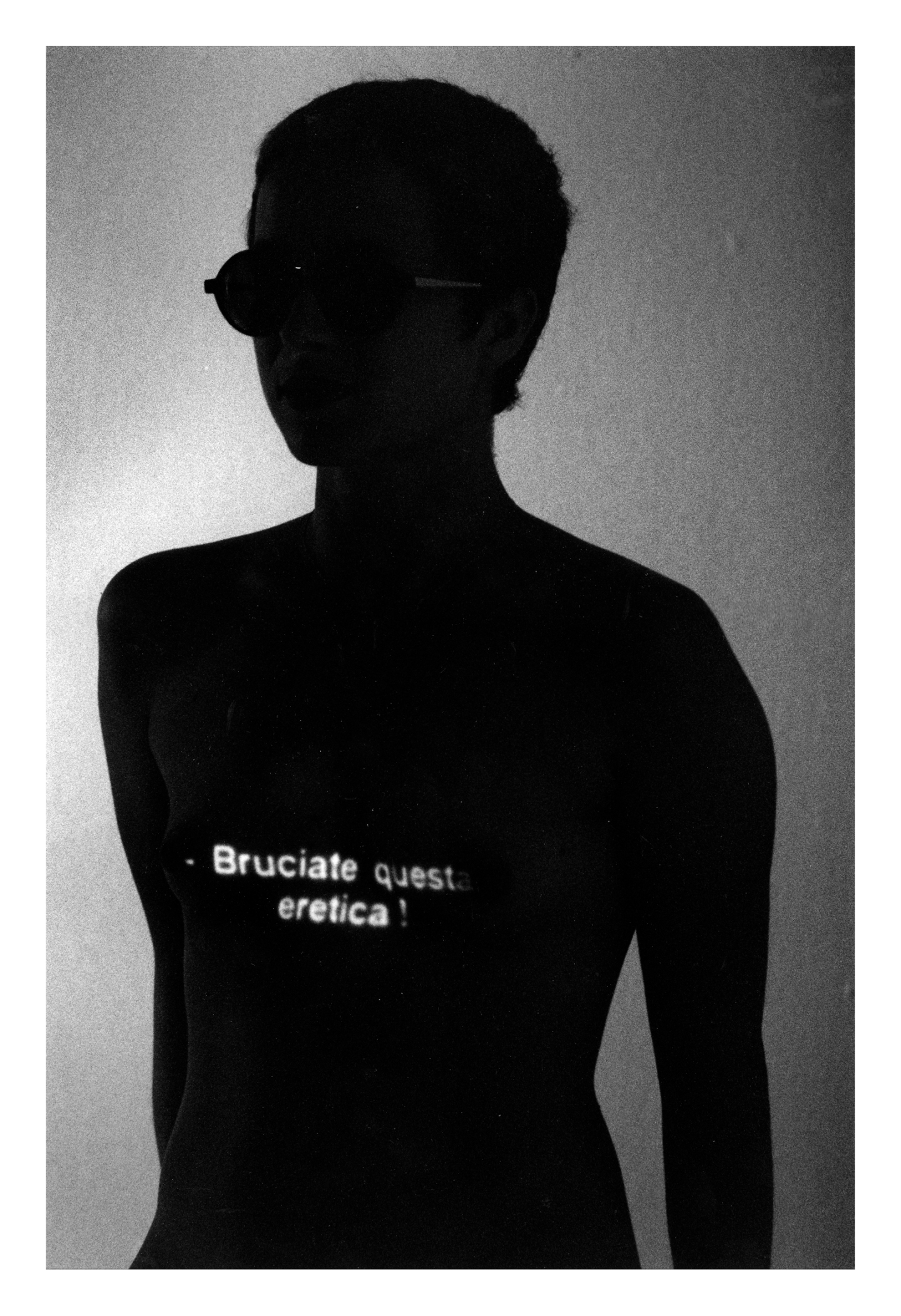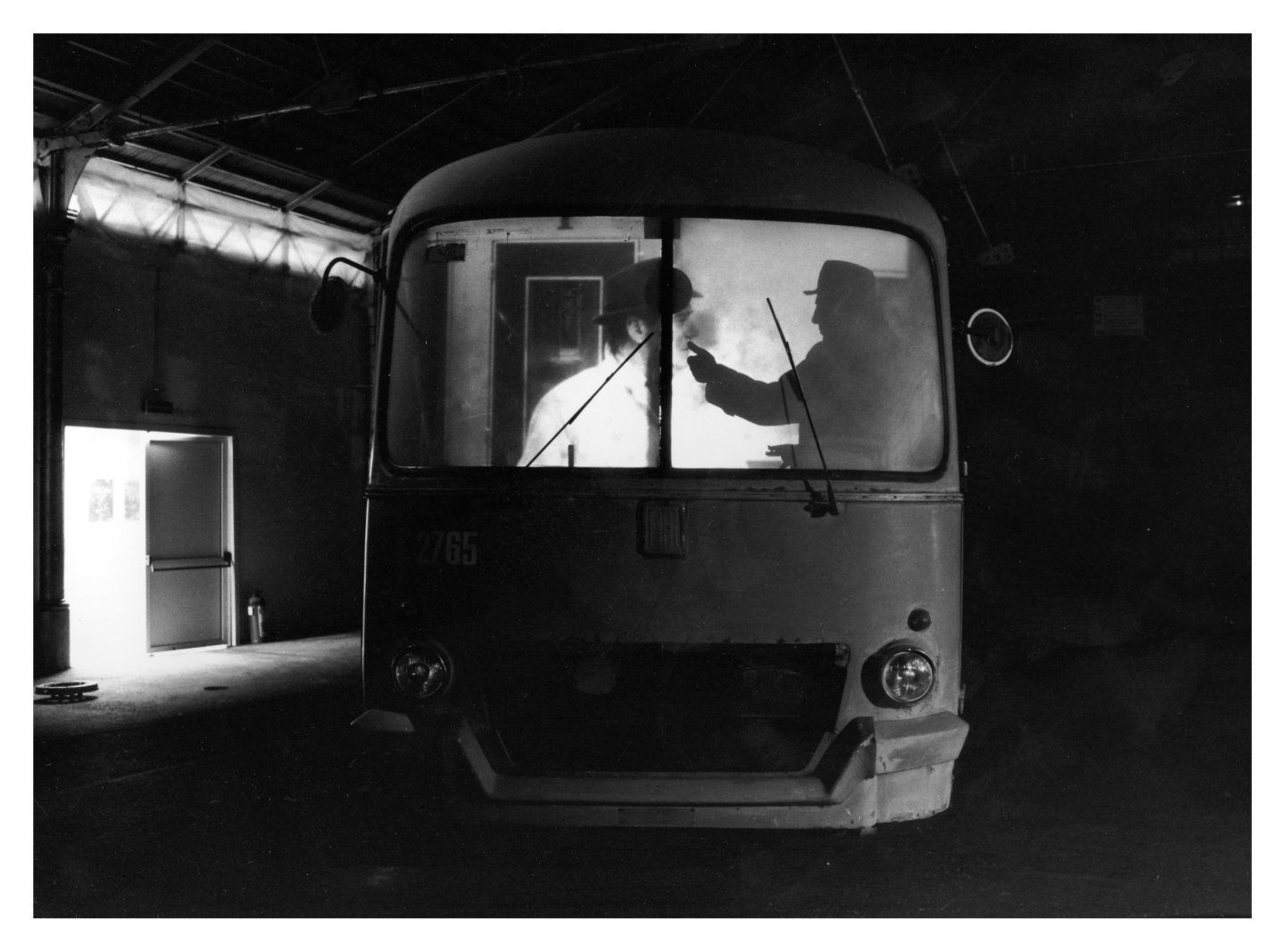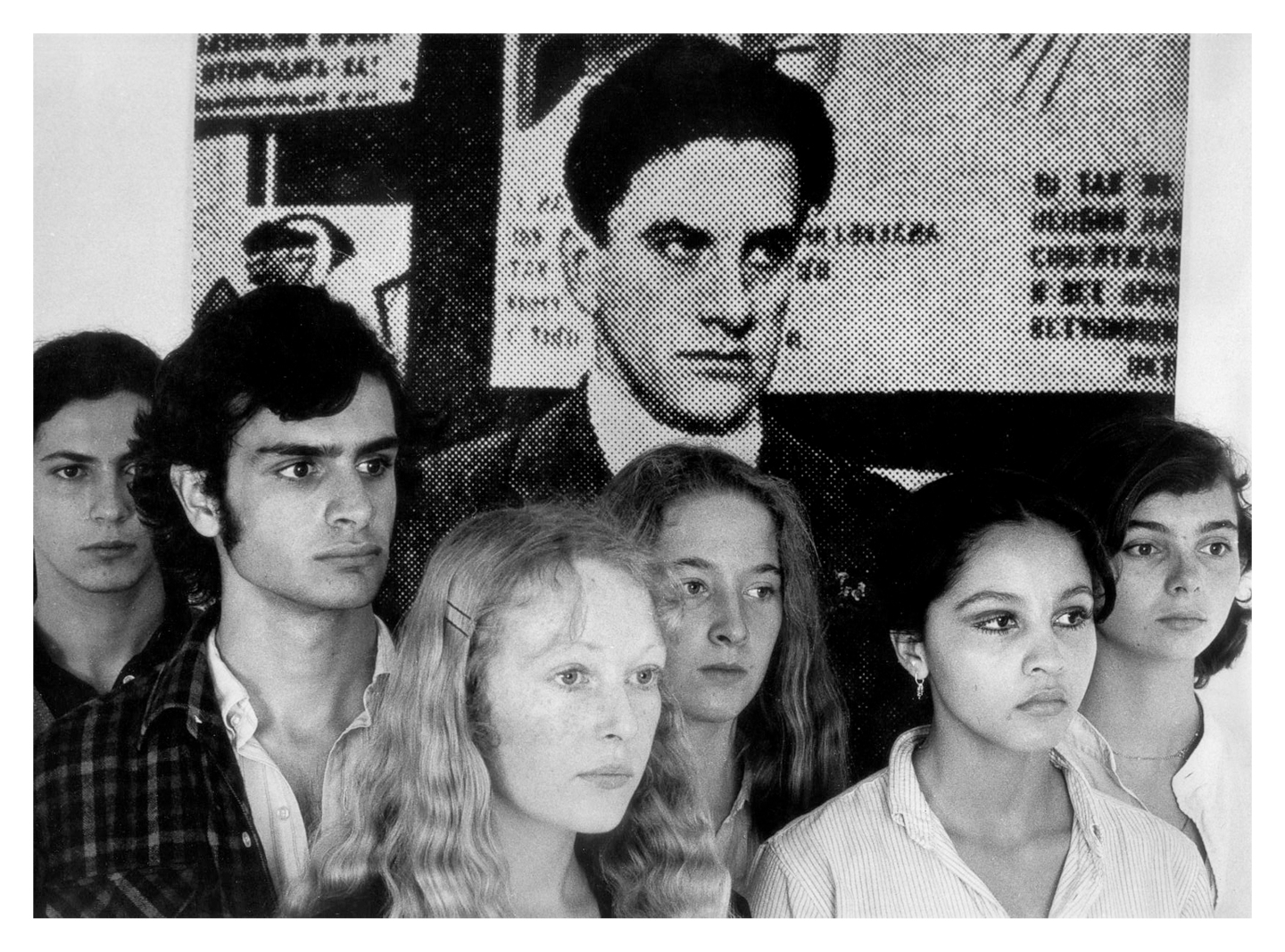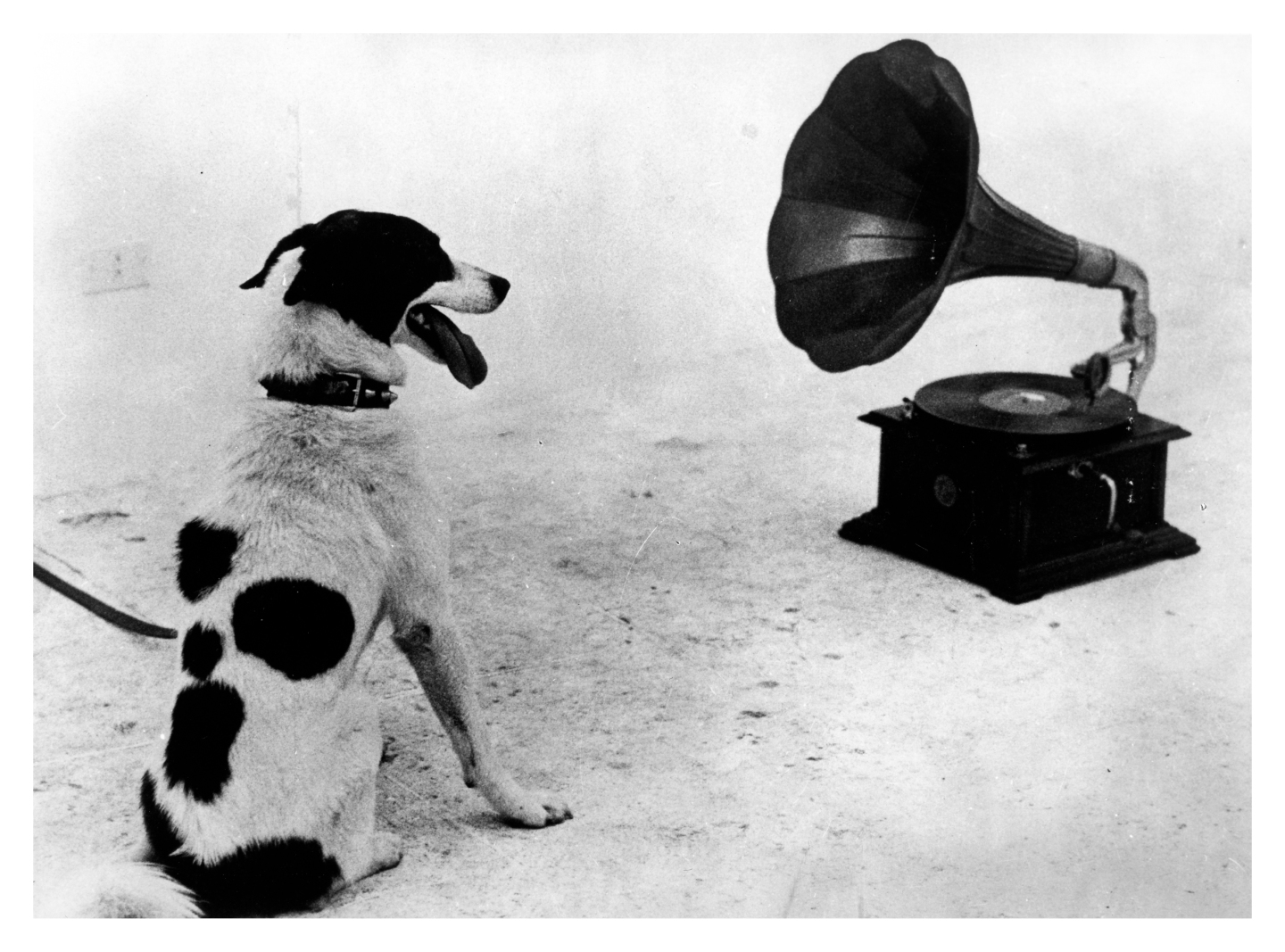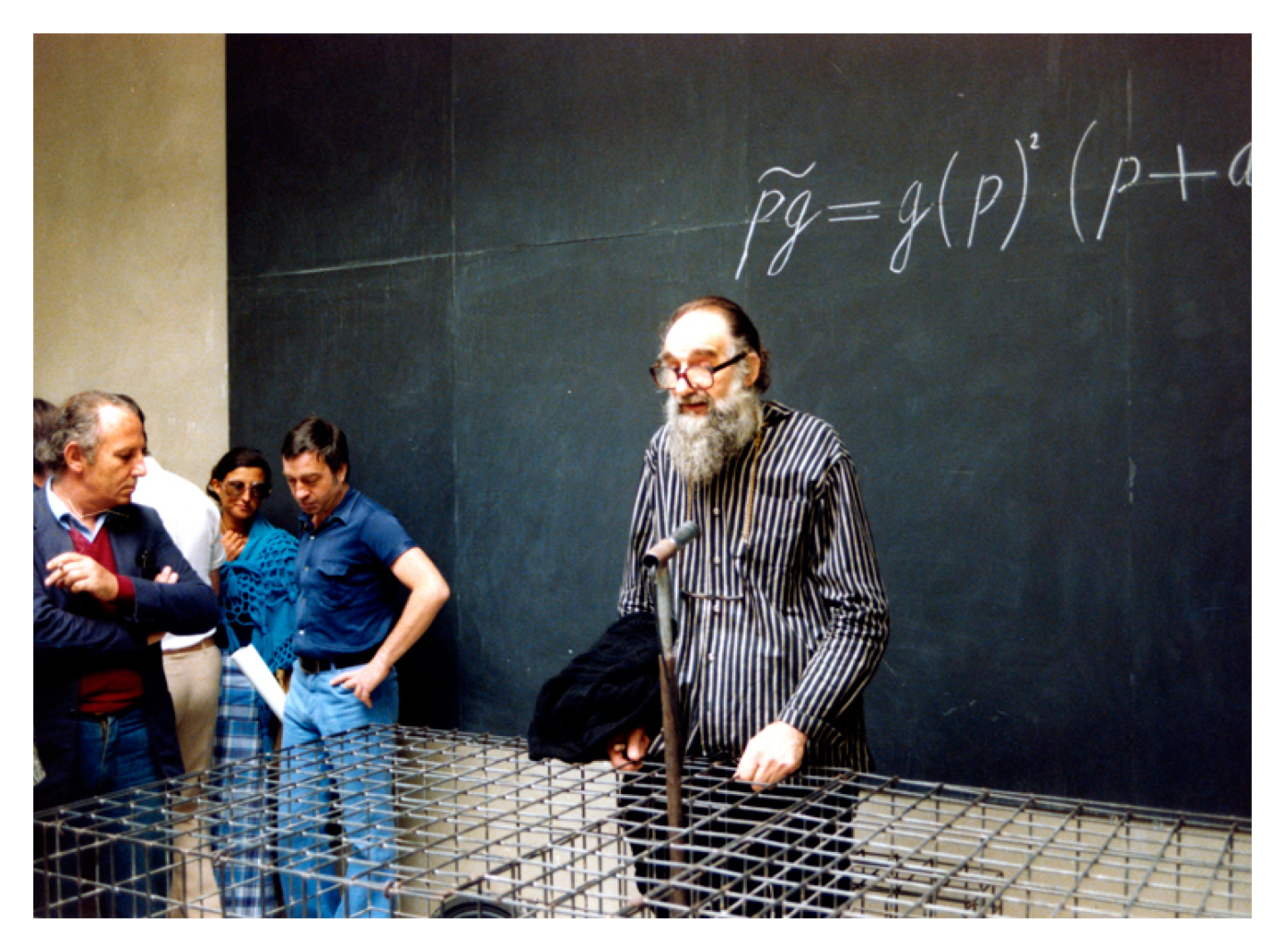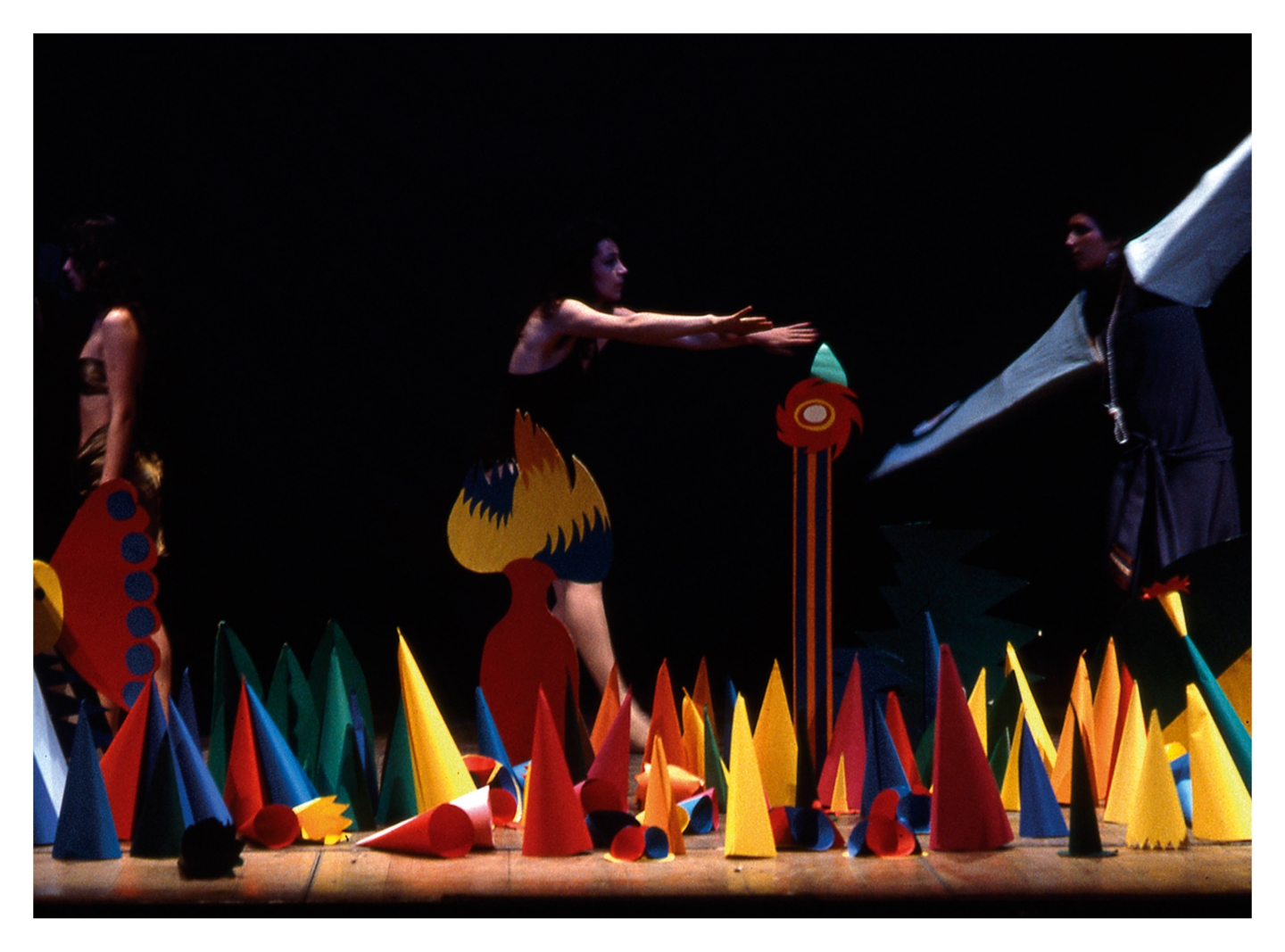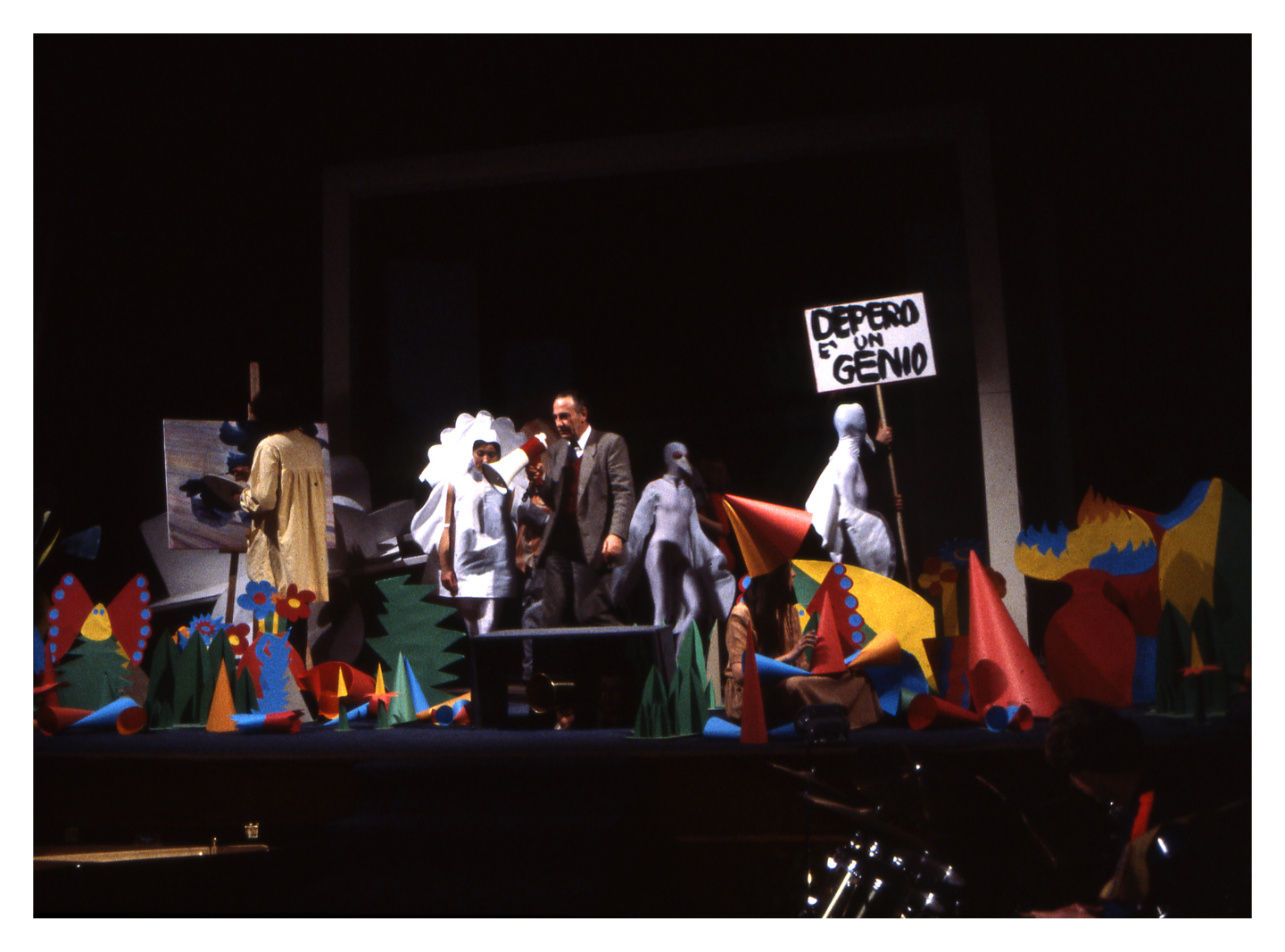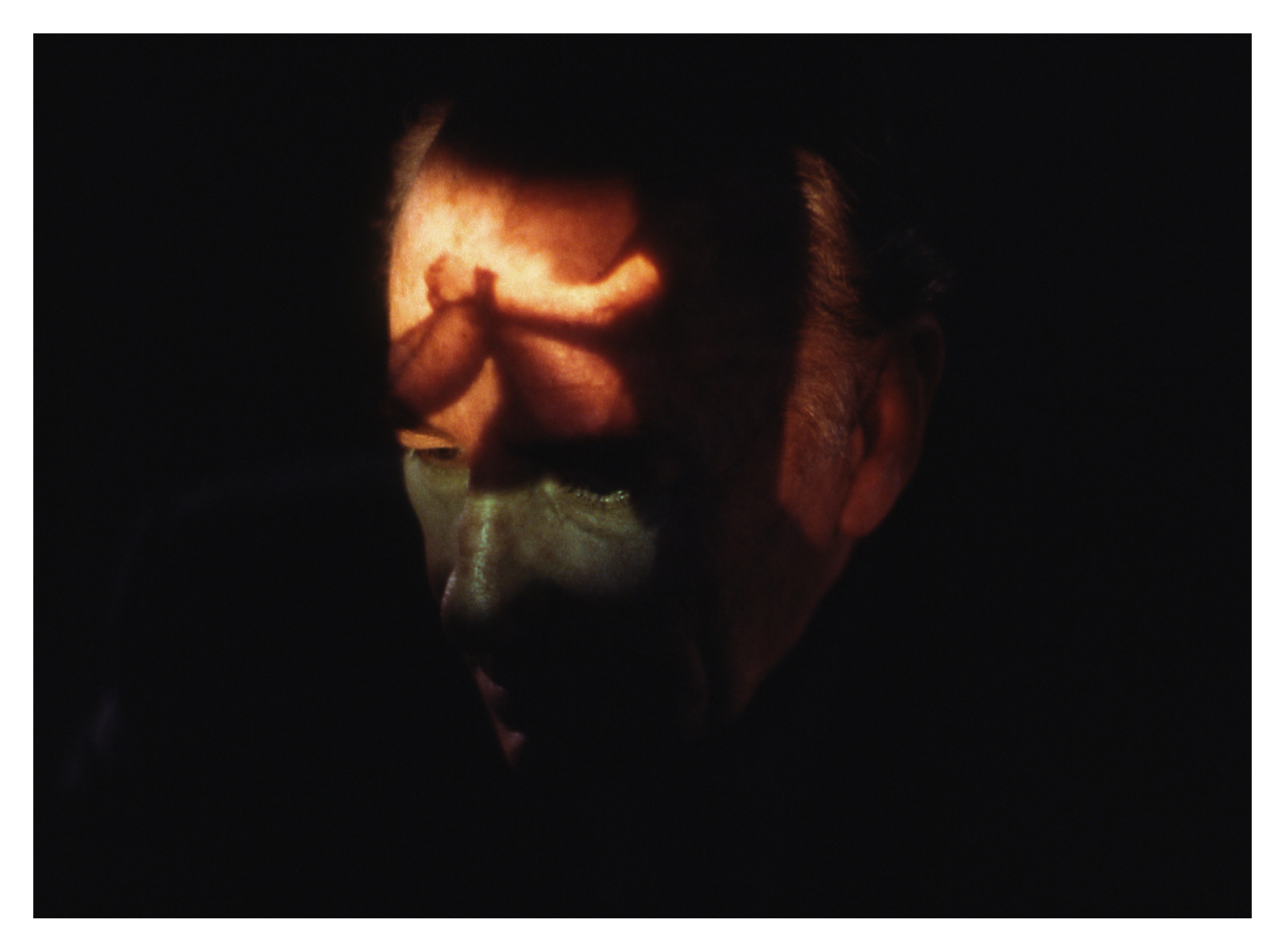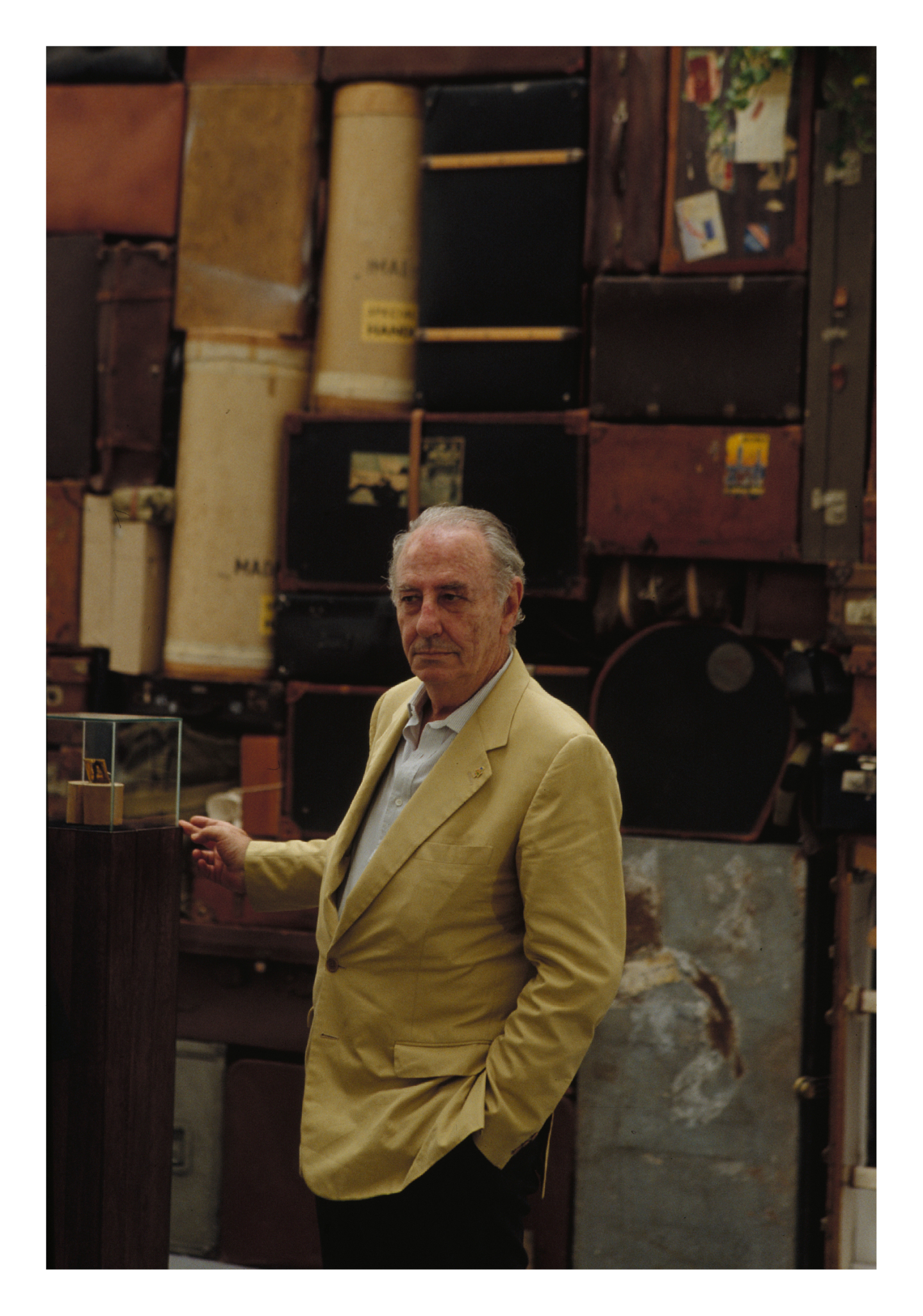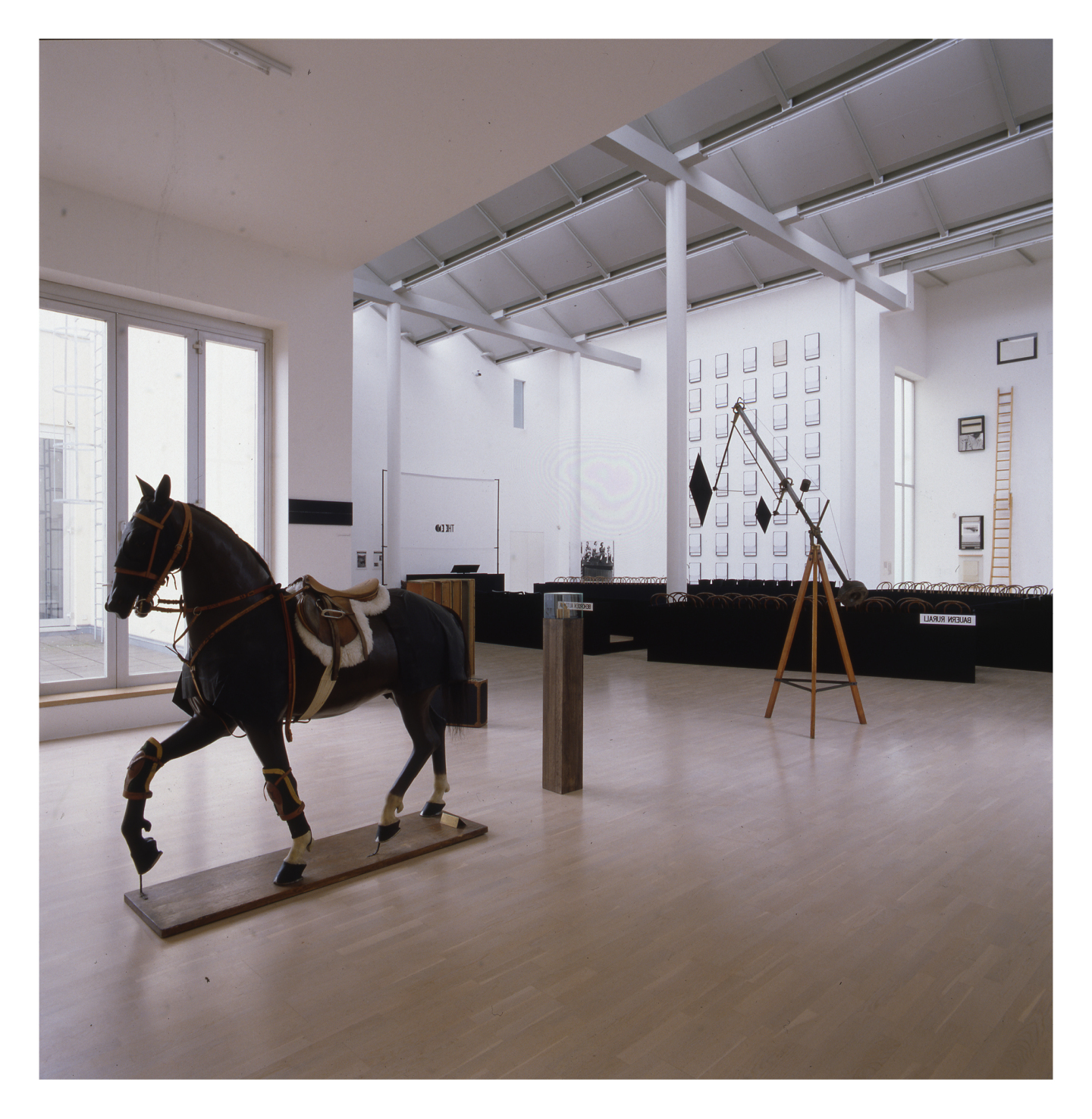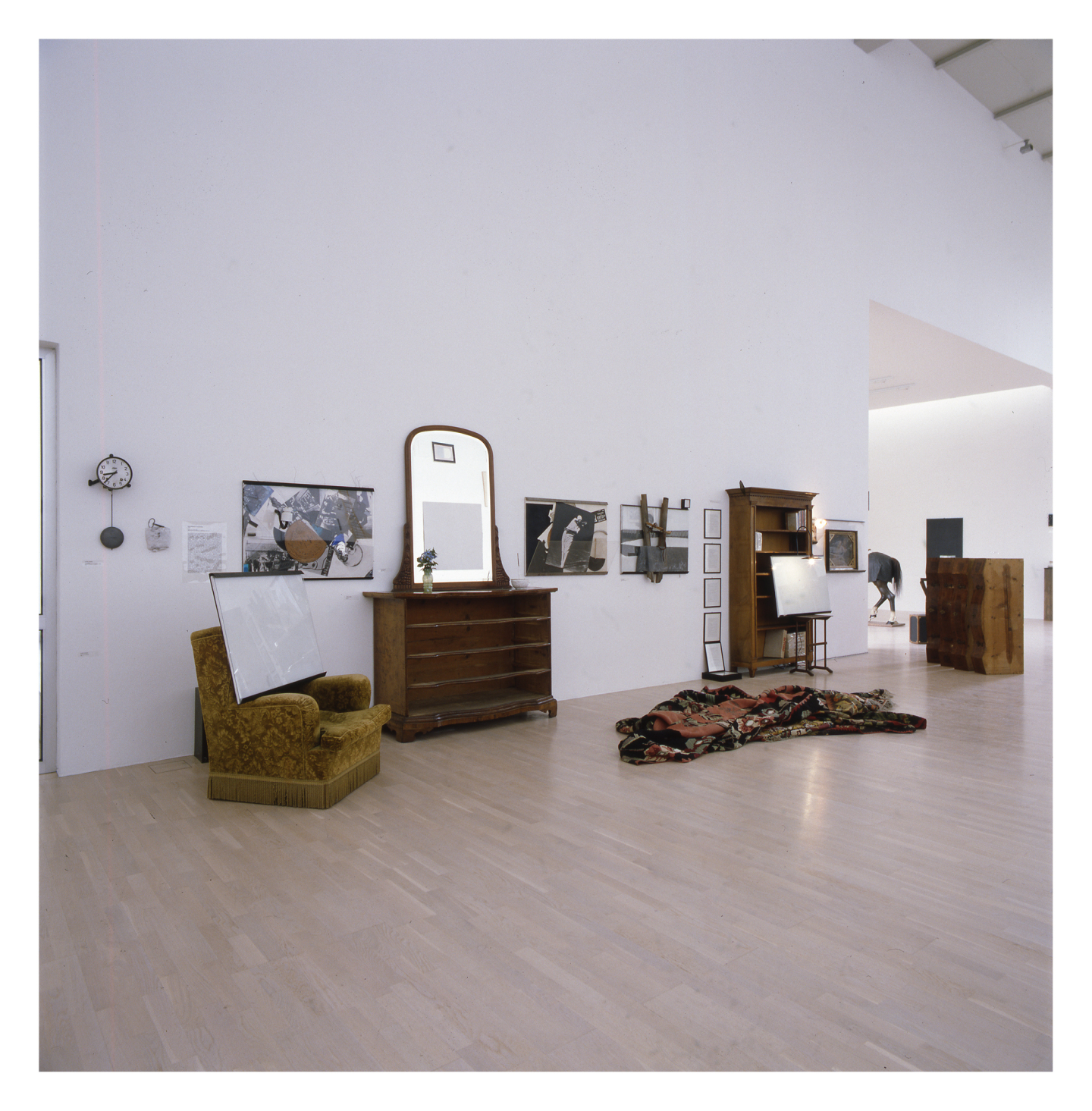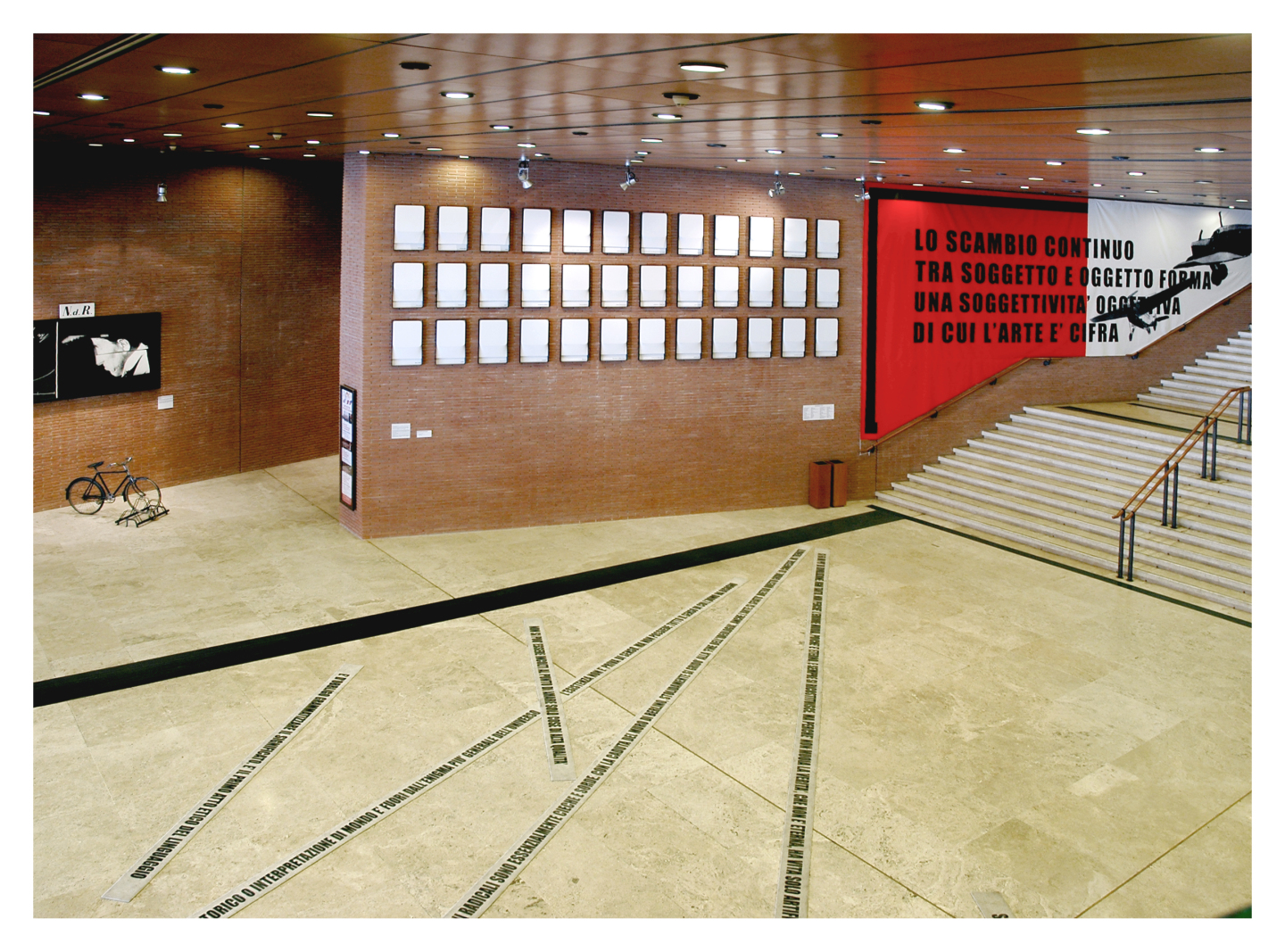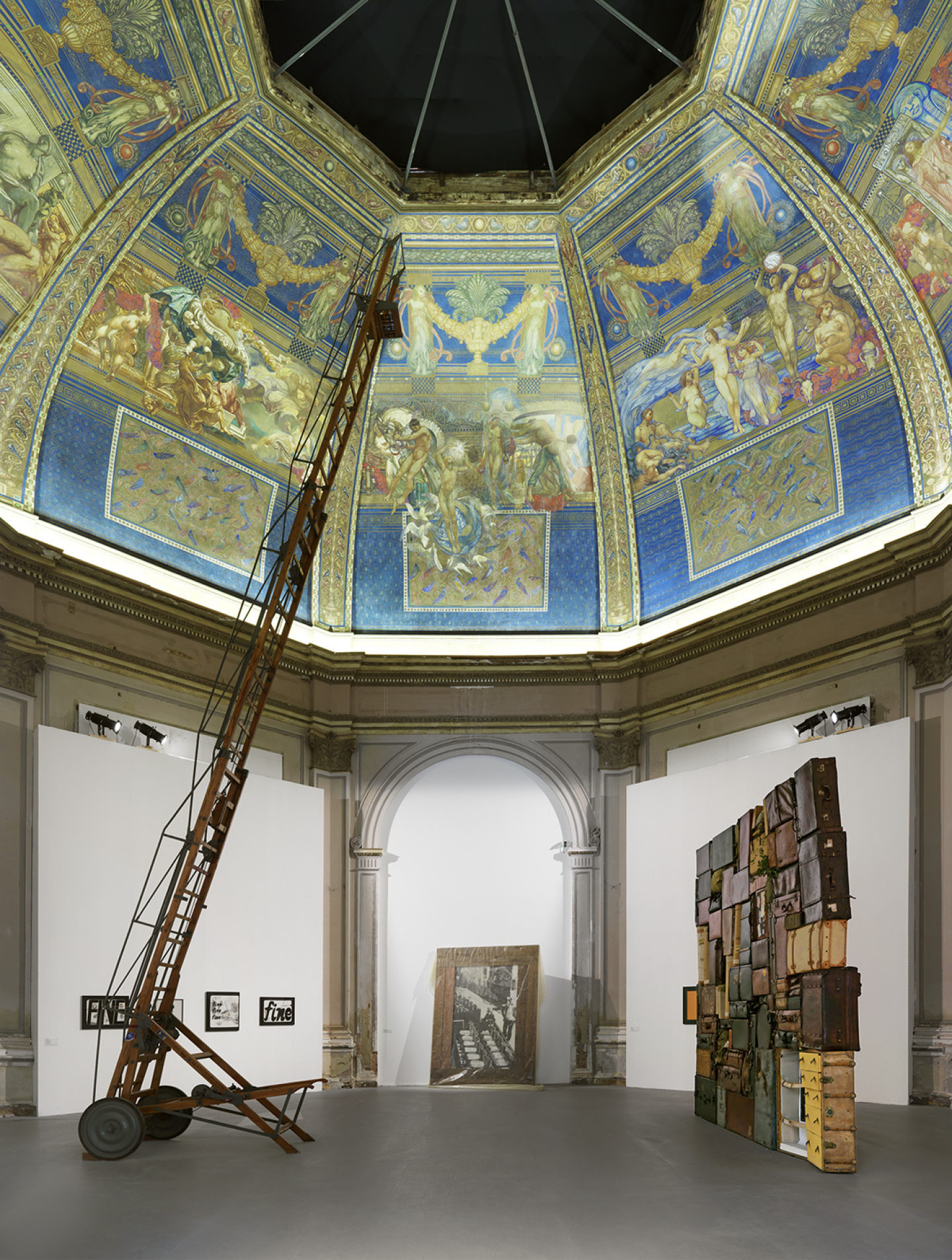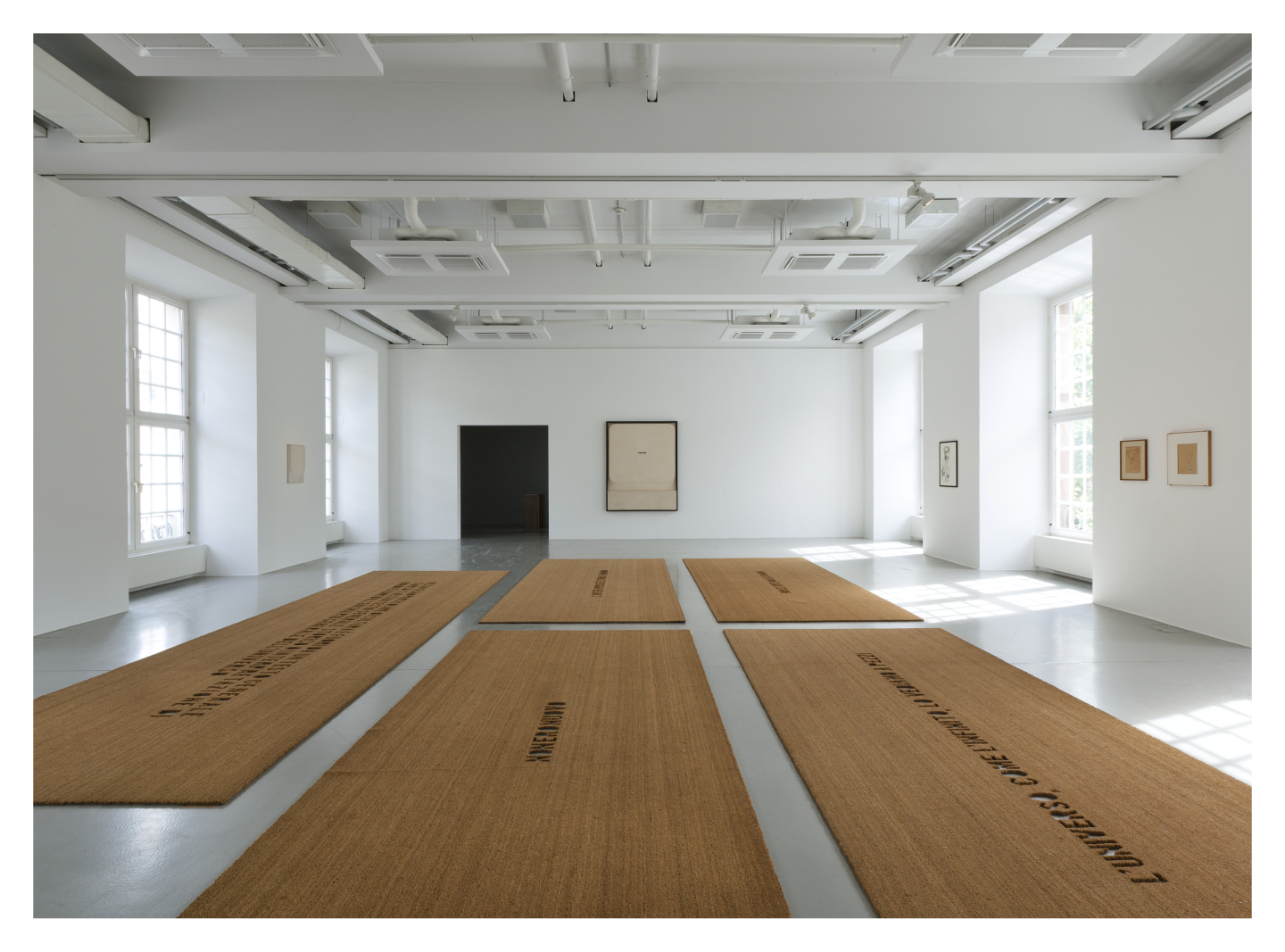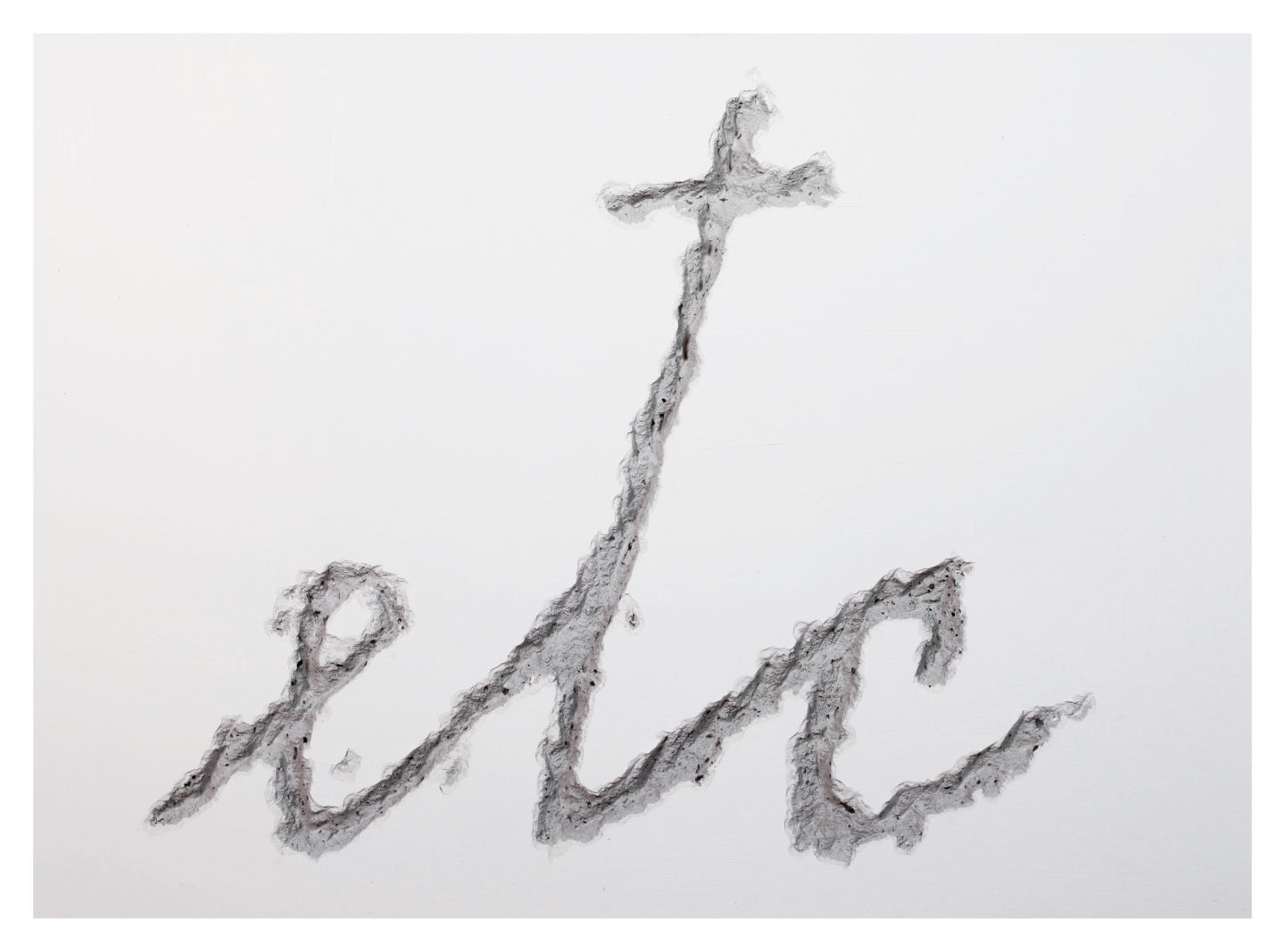Born in Rome on 1 April 1926, Fabio Mauri took his first steps in the art world in the early 1950s, making his debut in ’54 with an exhibition at the Galleria del Cavallino in Venice, followed a year later by a solo show at the Aureliana in Rome. Mauri exhibited drawings on paper and oil paintings characterized by Expressionist and Fauvesque colourism. In the exhibition introduction, Pier Paolo Pasolini wrote: “In Mauri, we may see a willingness for overhanging subject matter; we may see the idea that expressionism lies where the object emerges from the picture.”
In 1957, the artist made his first Schermo. All subsequent artistic research was grafted onto this germinal work. Tracing a black frame around a white sheet of paper, or stretching paper or cloth over a wooden frame reminiscent of the shape of a television set, Mauri marked out a field for projection, a surface potentially capable of accommodating any image, past or future, transcending pictorial representation and ushering in a new medium.
In Rome, Mauri combined his visual arts output with the role of theatre director, as well as working at his uncle Valentino Bompiani’s publishing house, where he was artistic director of the Almanacco Letterario, the “Sipario” magazine, and advised on books and covers. He frequented artists and intellectuals in Rome’s Piazza del Popolo artistic milieu, worked on TV programs, wrote songs for singer Laura Betti, and was close to the Gruppo 63 poets, working with some of them to found the “Quindici” magazine (1967-1969). In the 1960s, Mauri exhibited works at Gian Tomaso Liverani’s La Salita, Plinio De Martiis’ La Tartaruga, Mara Coccia’s Arco D’Alibert, and Nancy Marotta’s Mana Art Market galleries. Emilio Villa, Pierre Restany, Gillo Dorfles, Tommaso Trini, Cesare Vivaldi, Maurizio Calvesi, and Achille Bonito Oliva all wrote about him. In 1960, Mauri founded the Crack group with Pietro Cascella, Piero Dorazio, Gino Marotta, Gastone Novelli, Achille Perilli, Mimmo Rotella, Giulio Turcato, and critic Cesare Vivaldi. In 1964, he staged L’Isola, a pop-art theatre play conceived as a collage of literature, theatre, and comic books.
Mauri’s focus on the mass media and direct use of consumer society images led to him being identified with artists from the Scuola di Piazza del Popolo, with whom he shared a personal quest spanning Nouveau Realisme and American Pop Art. However, at the precise moment Pop Art broke through – at the 1964 Venice Biennale – Mauri distanced himself from the movement, shifting focus to ever-more ideologically-driven research.


Fabio Mauri worked with his assistants until the final days of his life, supported by his partner Piera Leonetti and his brother Achille. He succumbed to a tumour on 19 May 2009, days before his Etc. exhibition opened at the Galleria Michela Rizzo in Venice.



